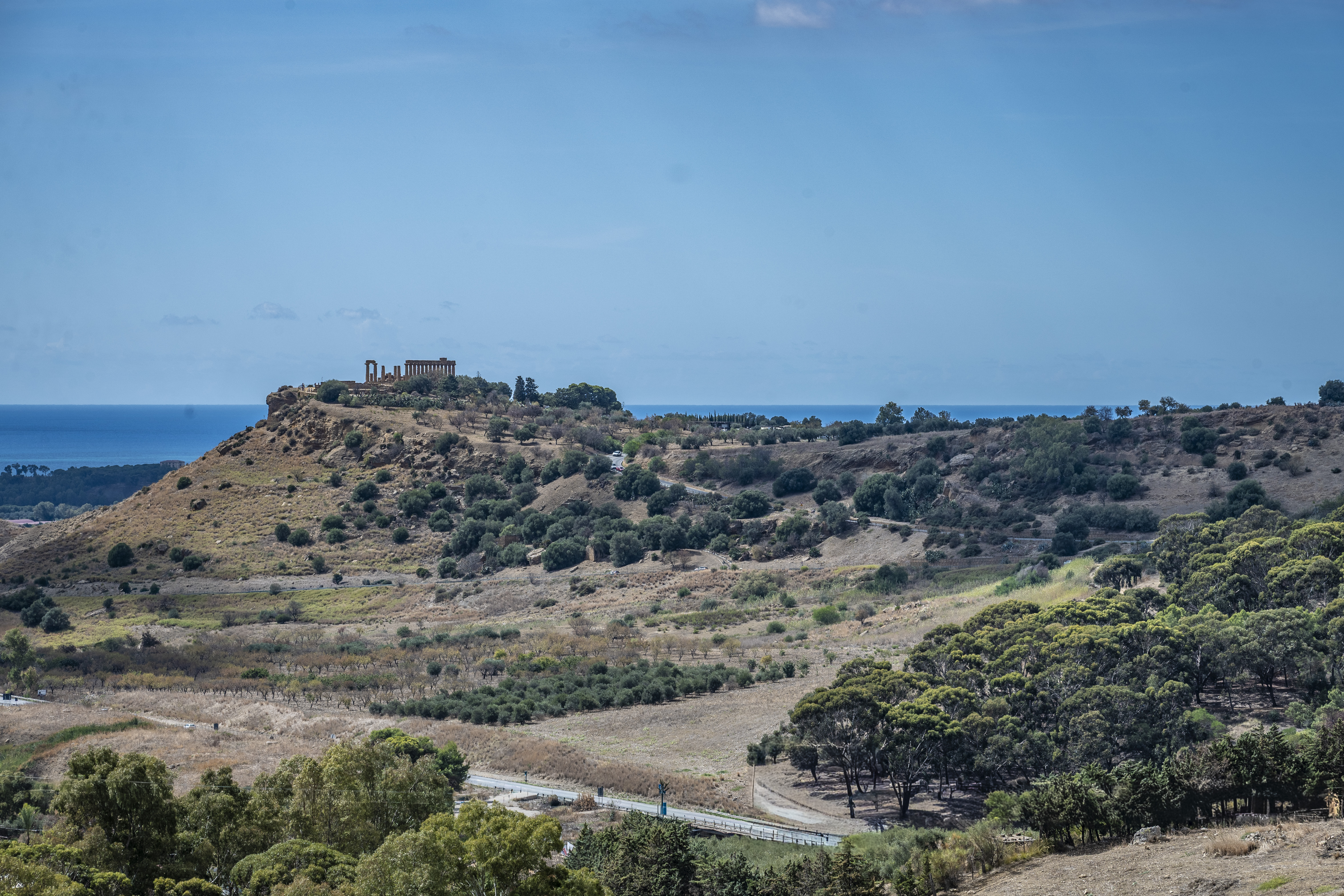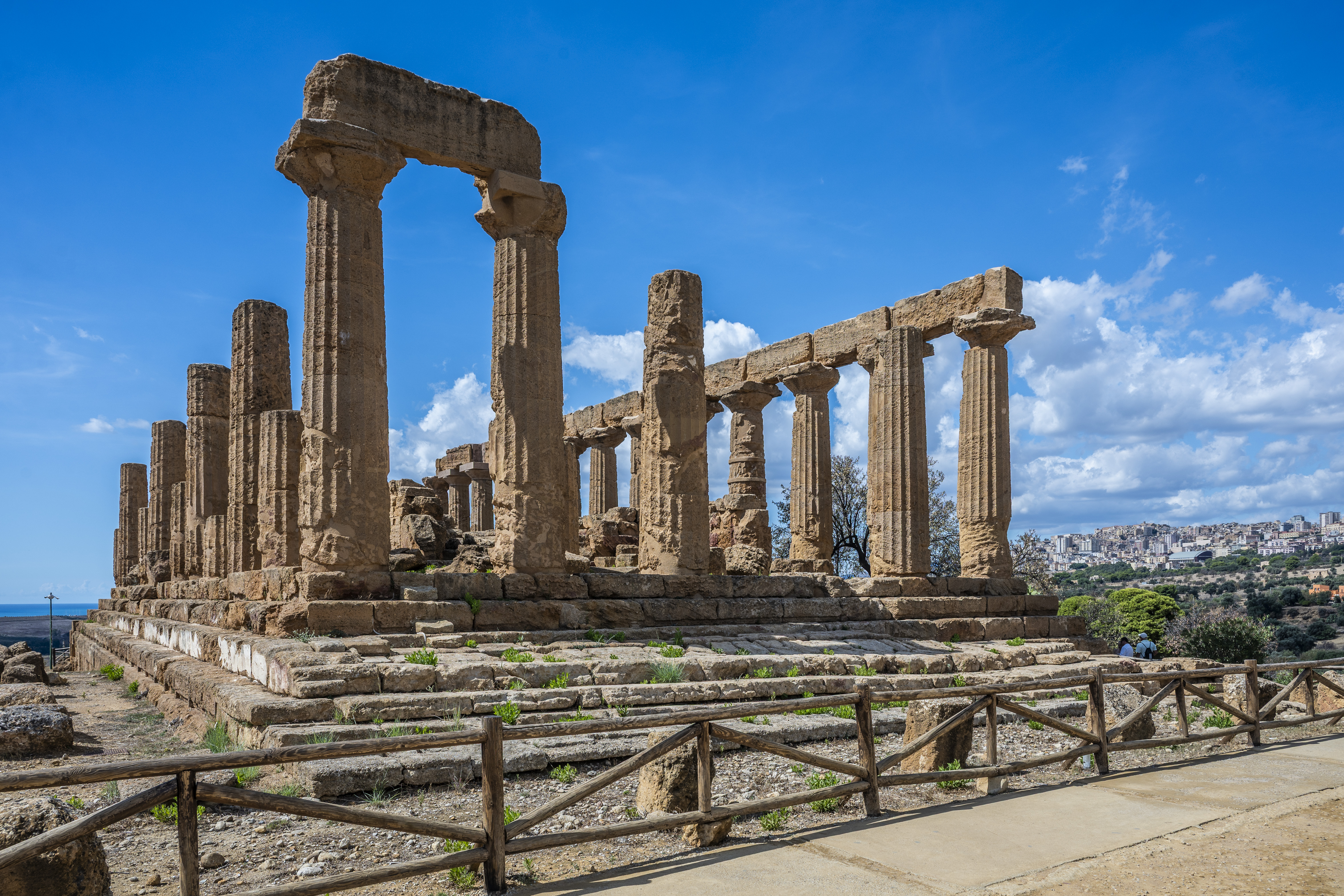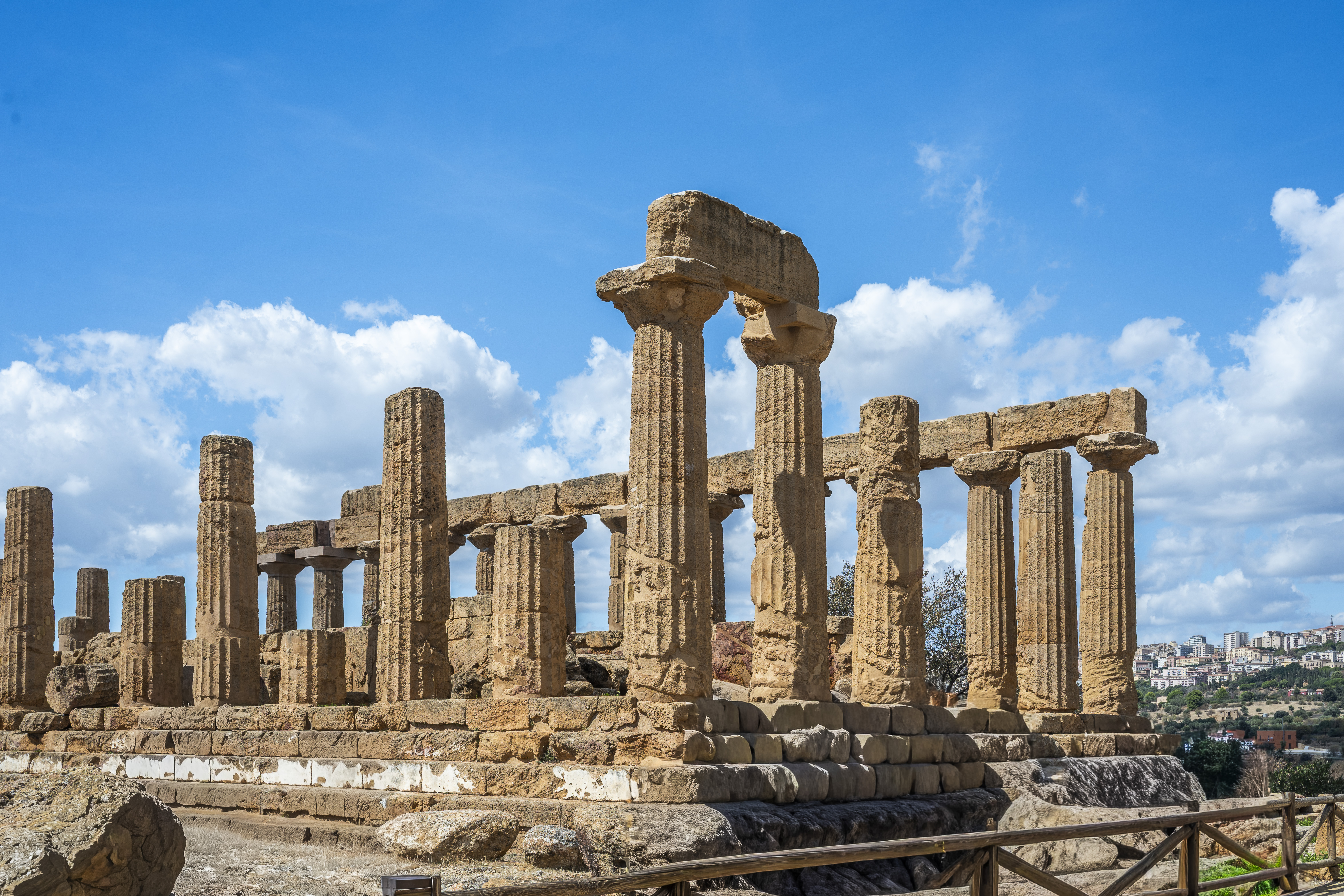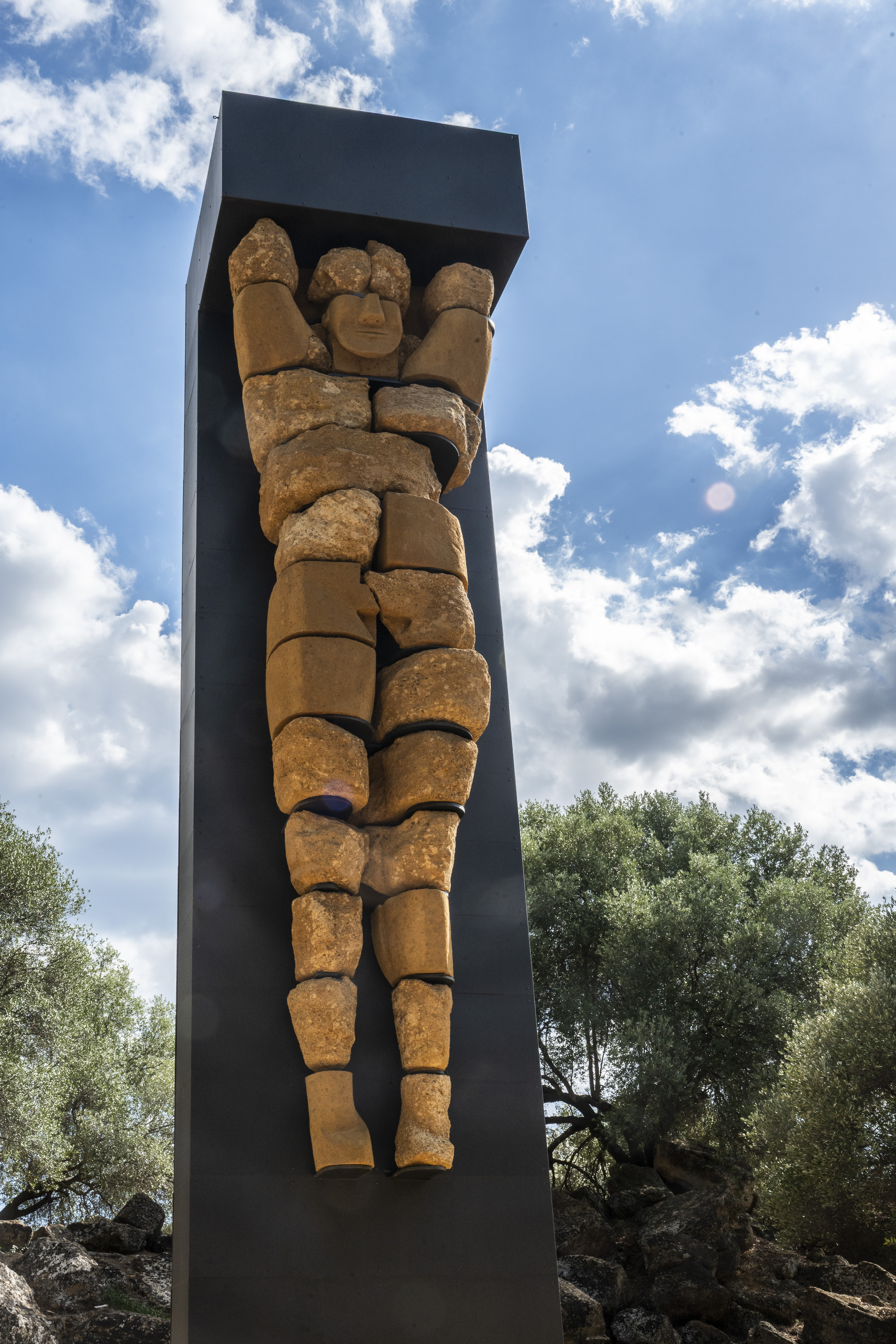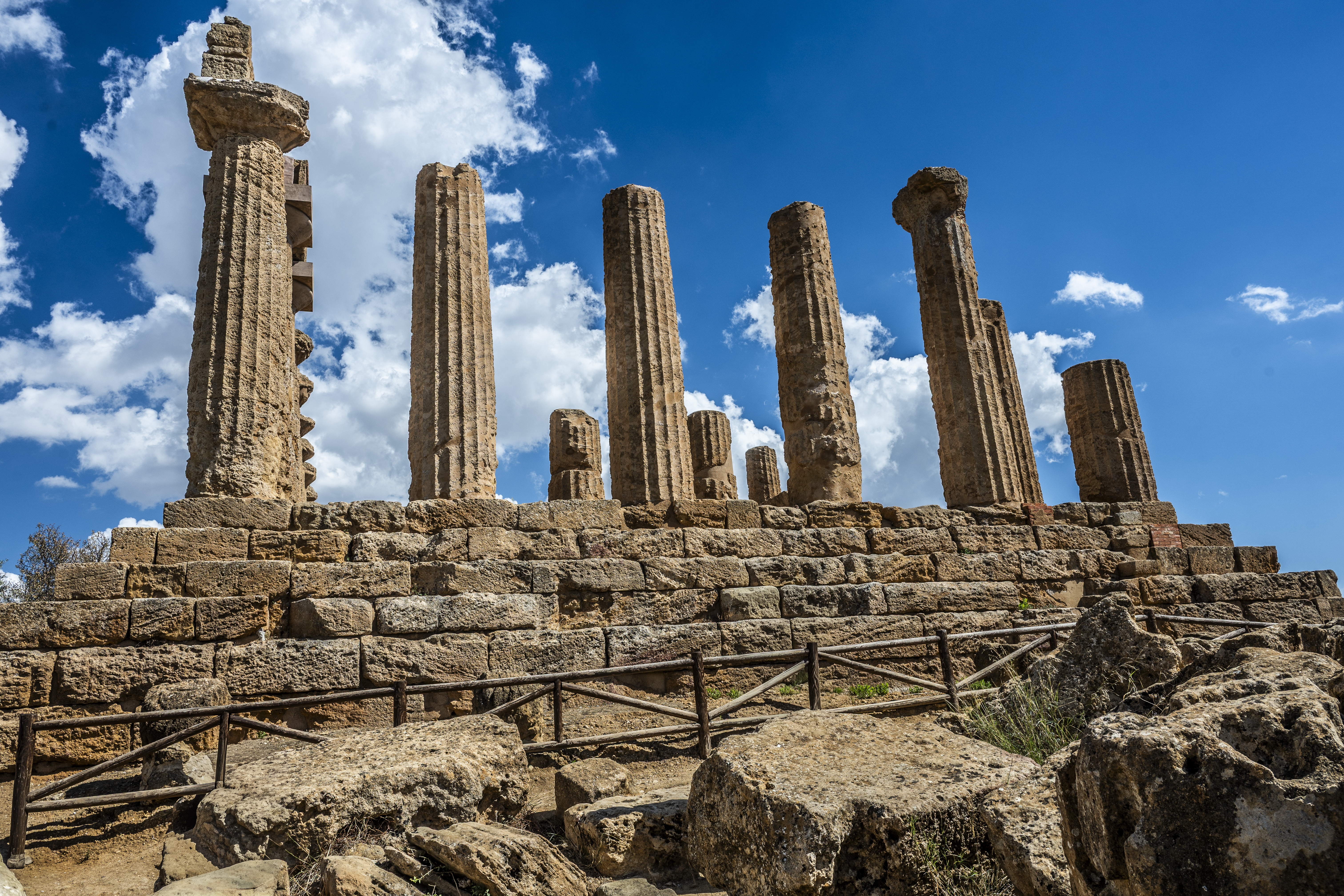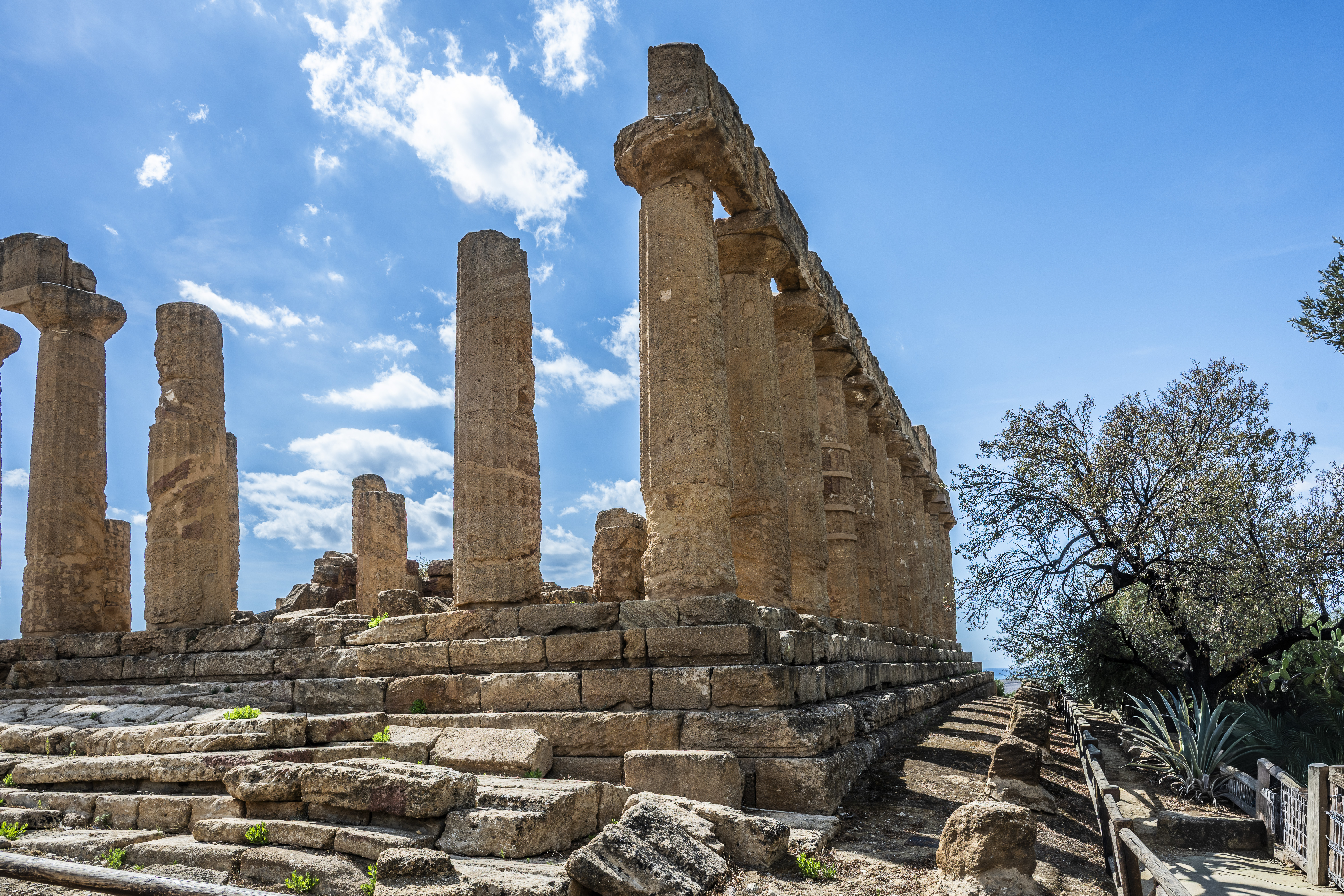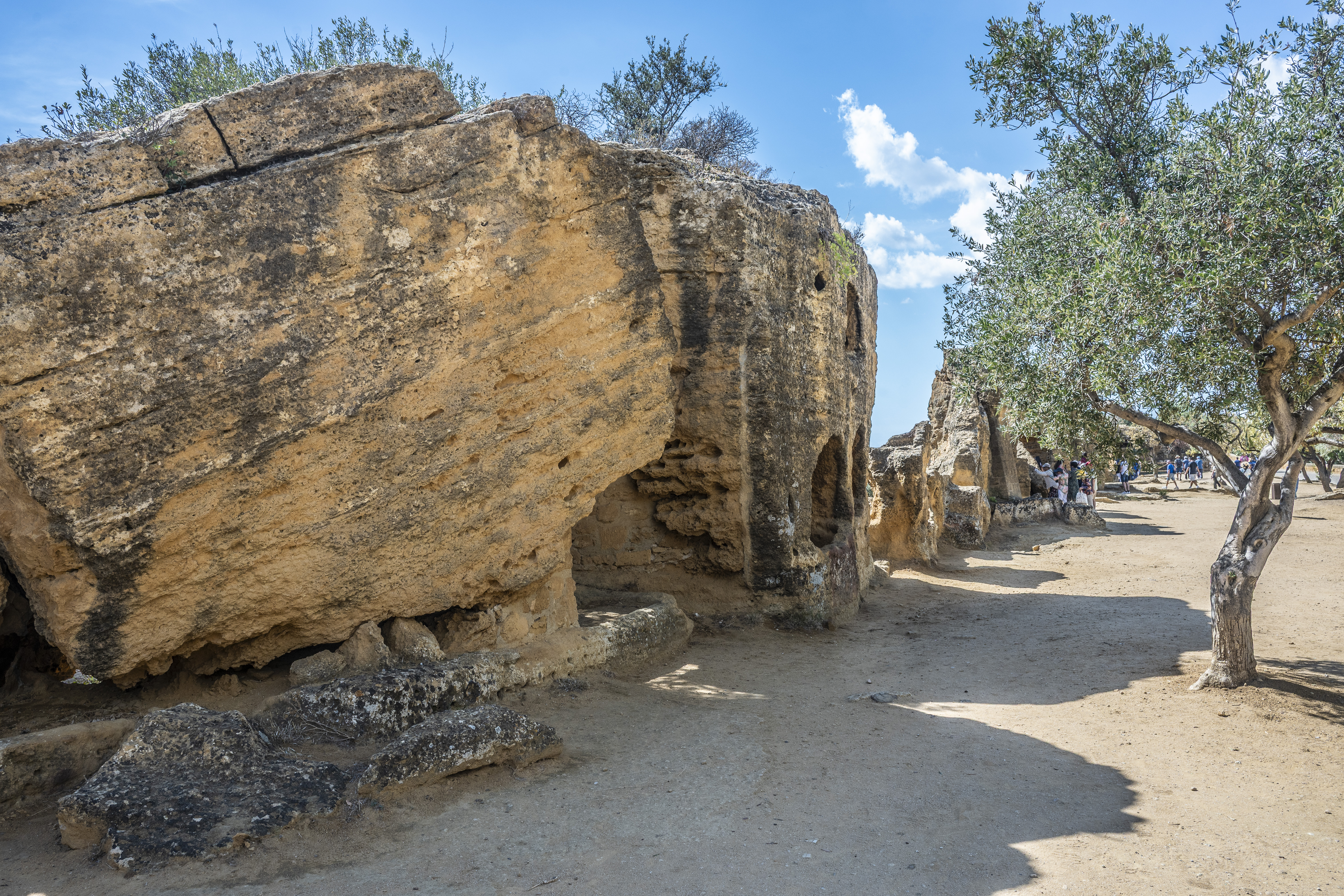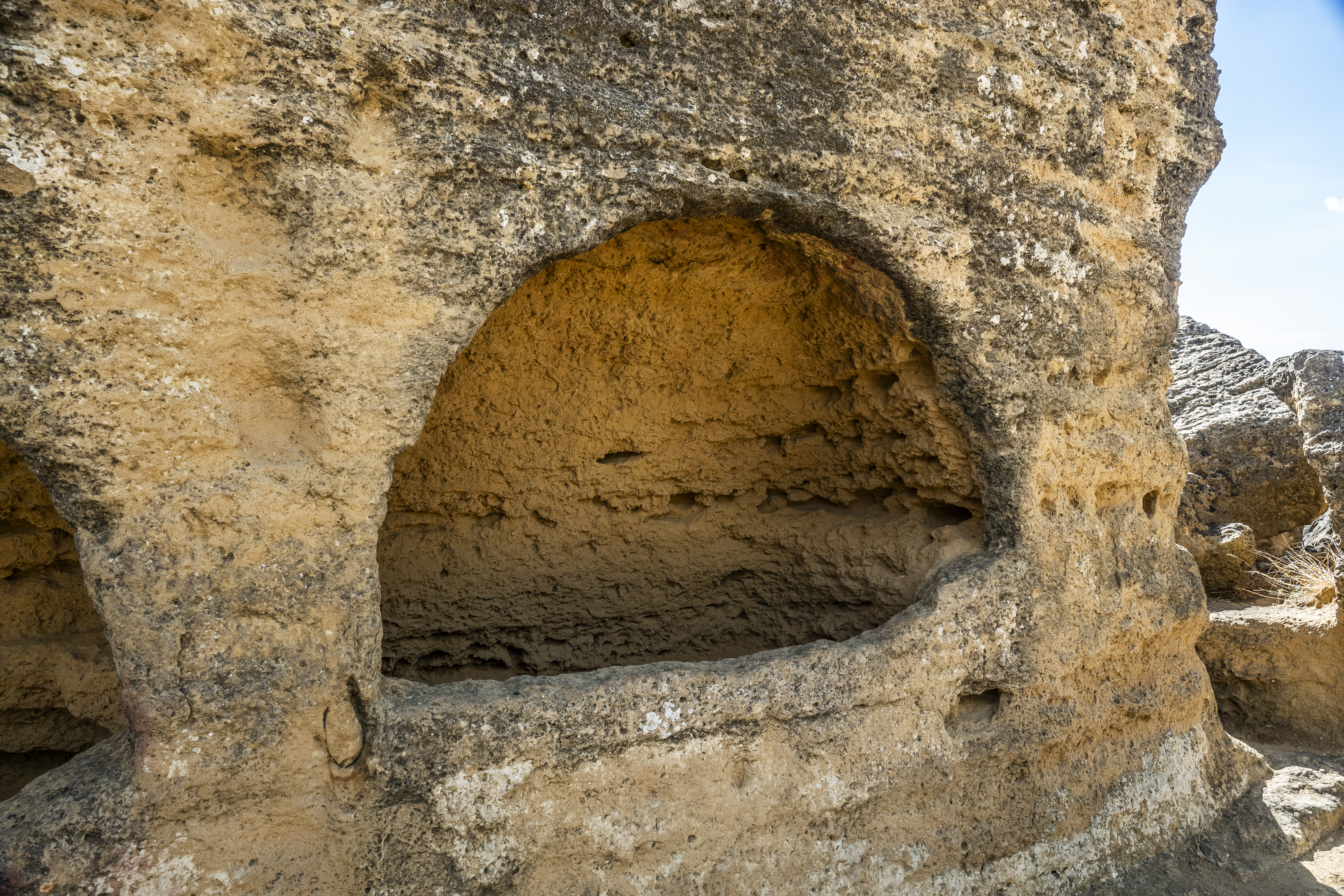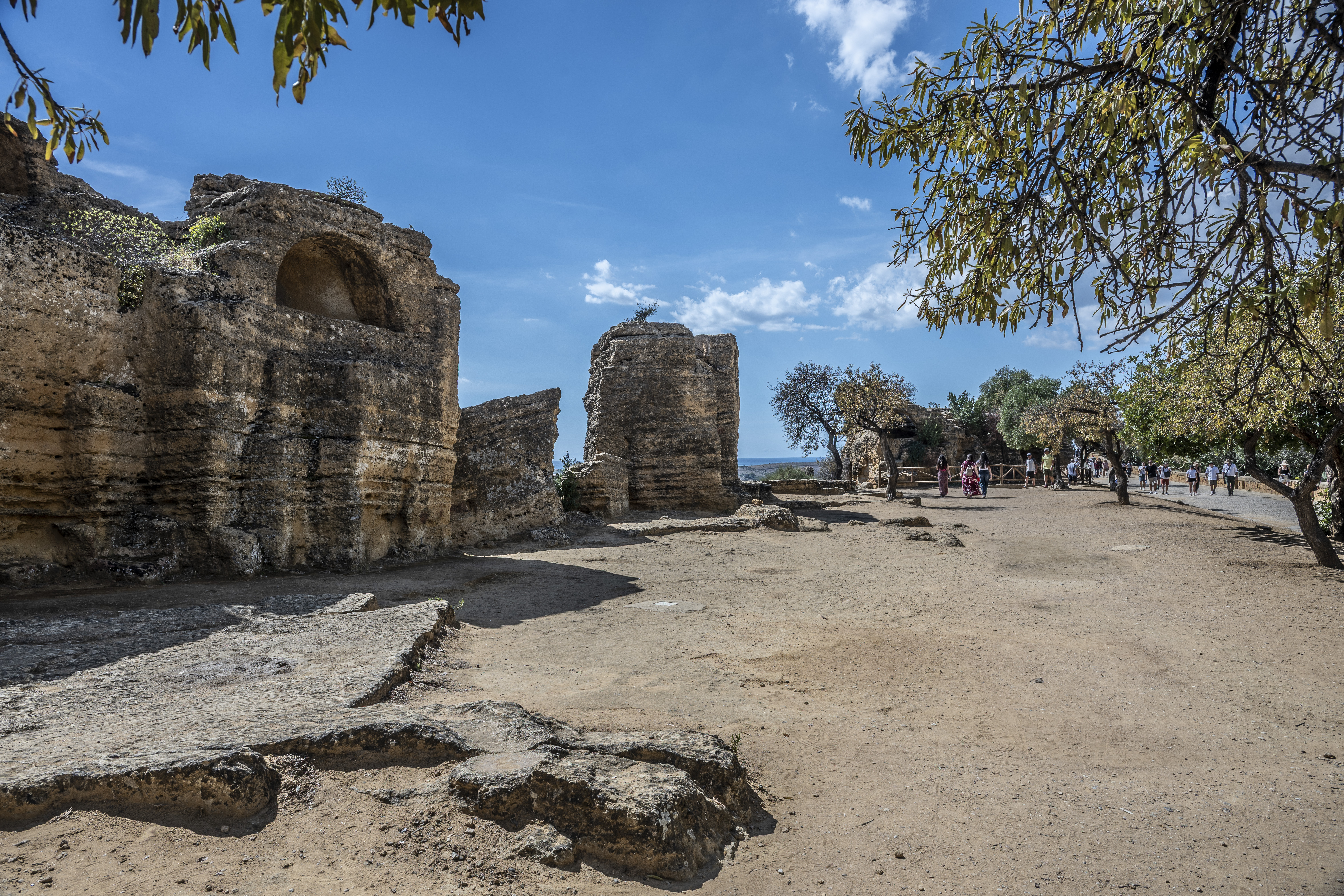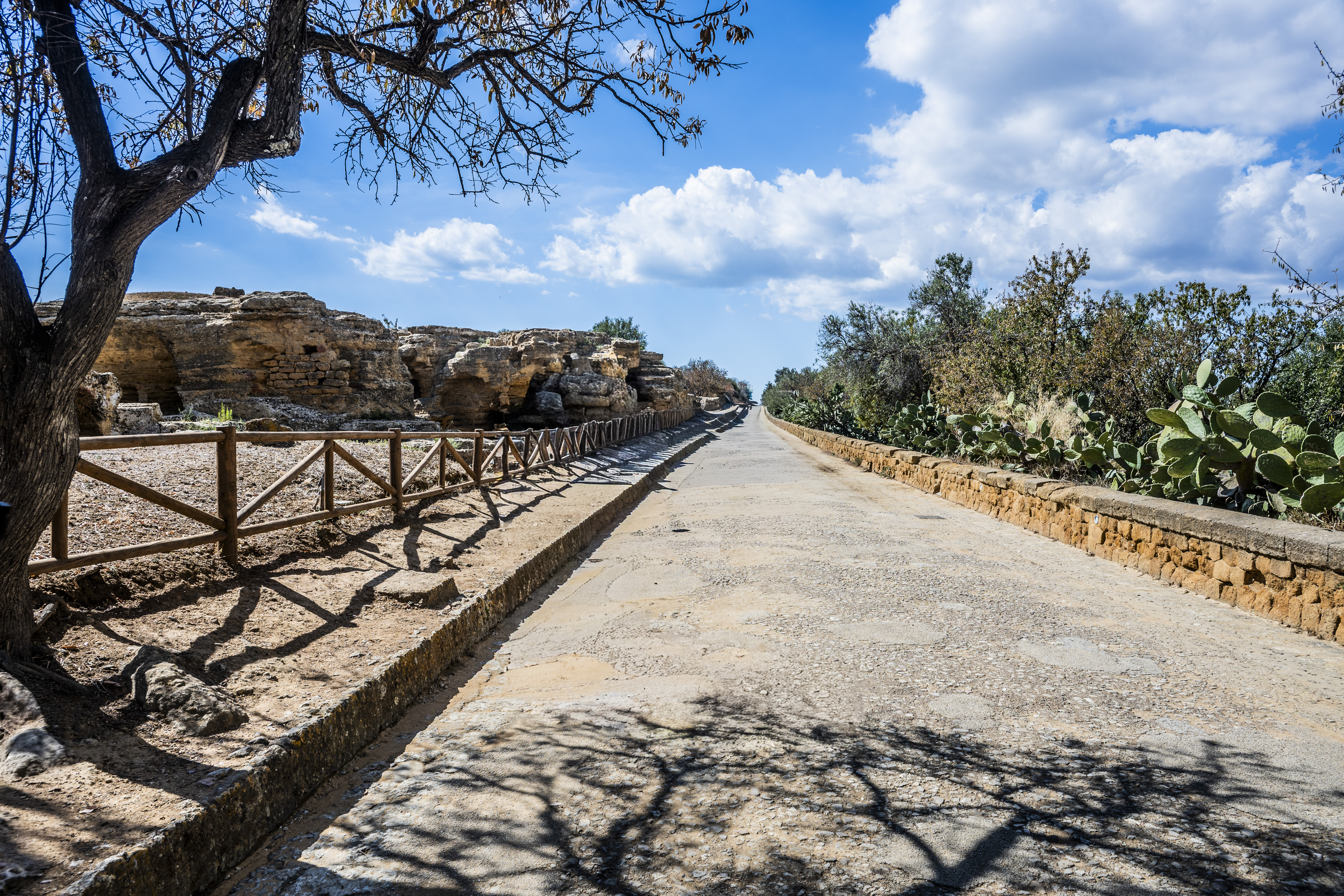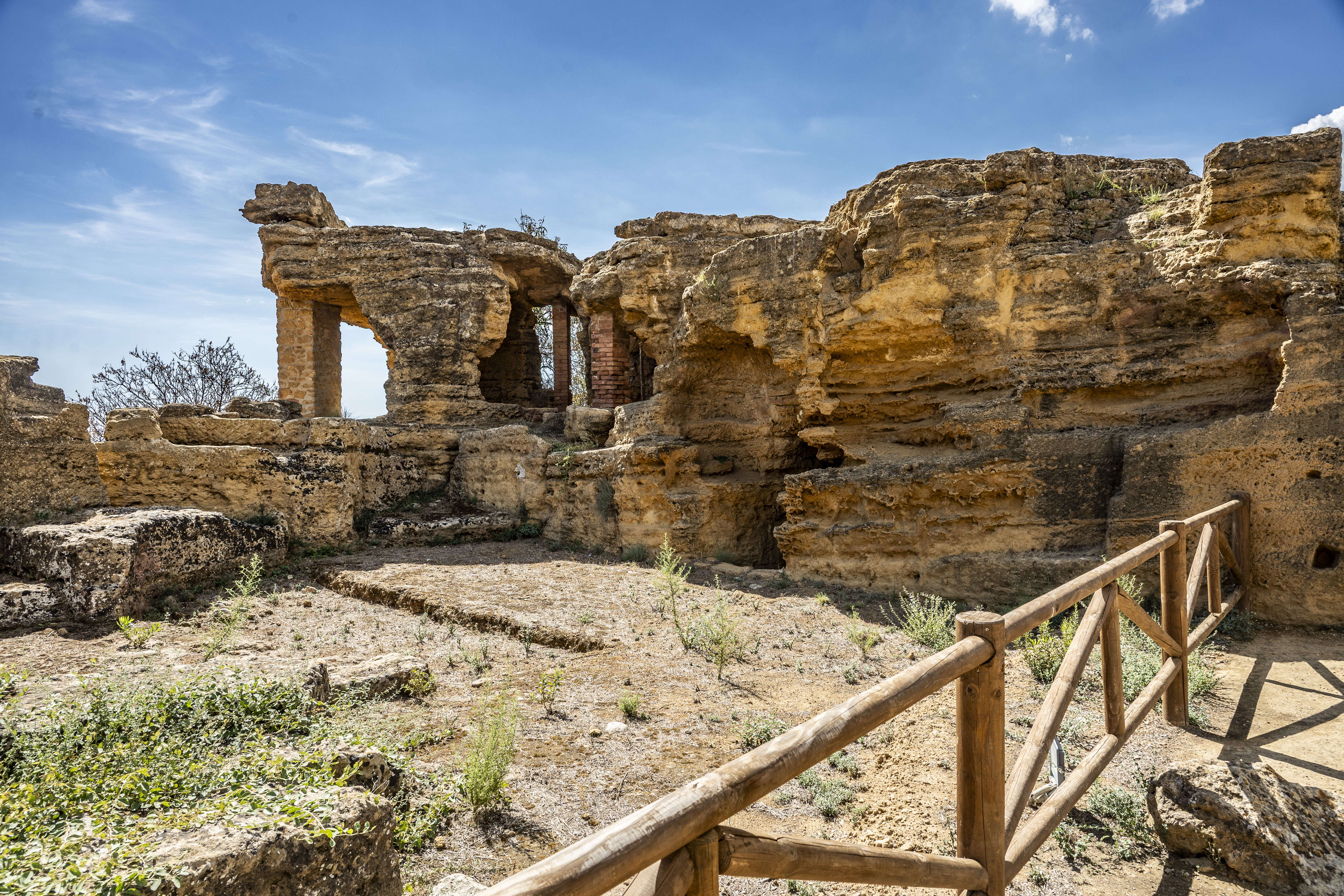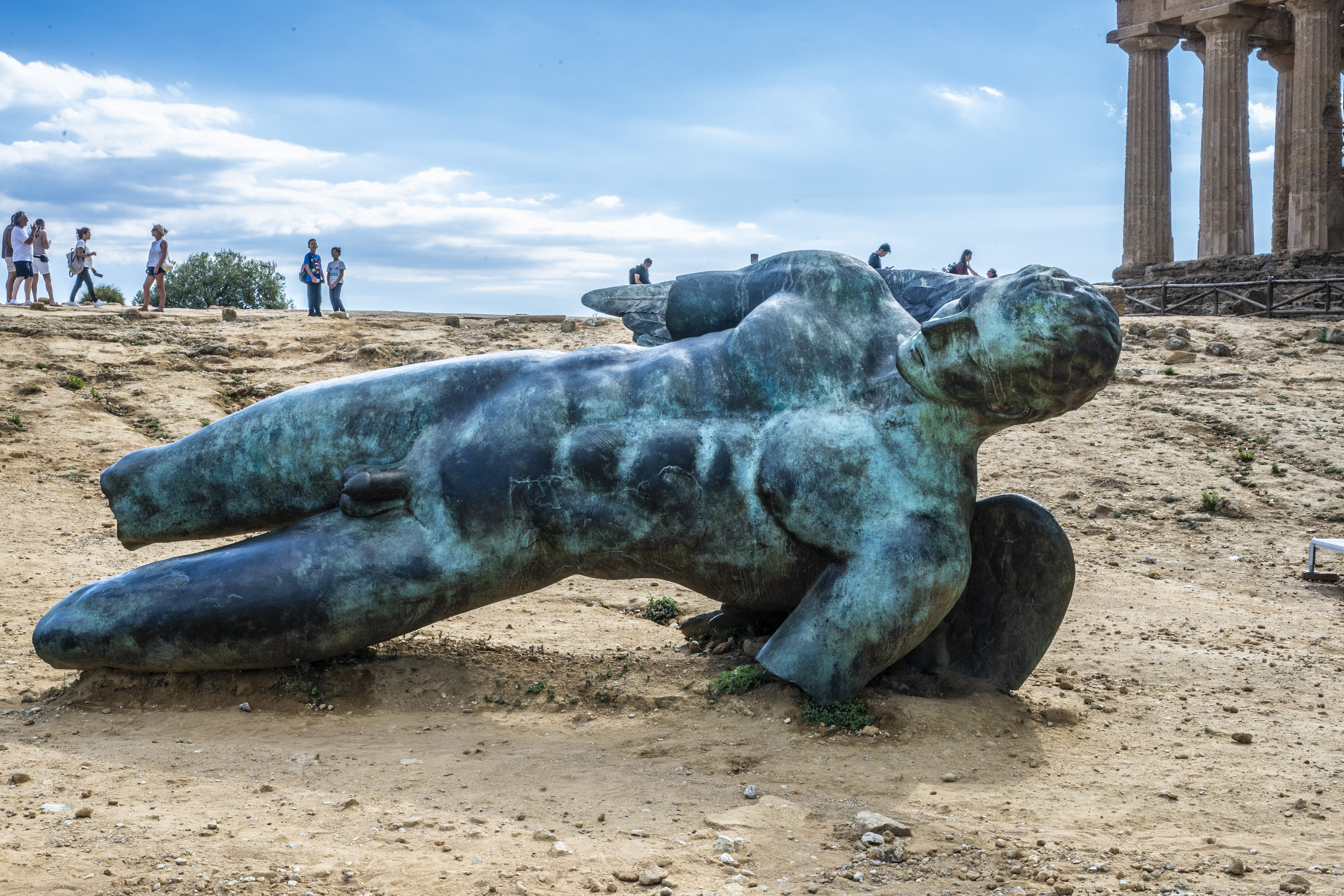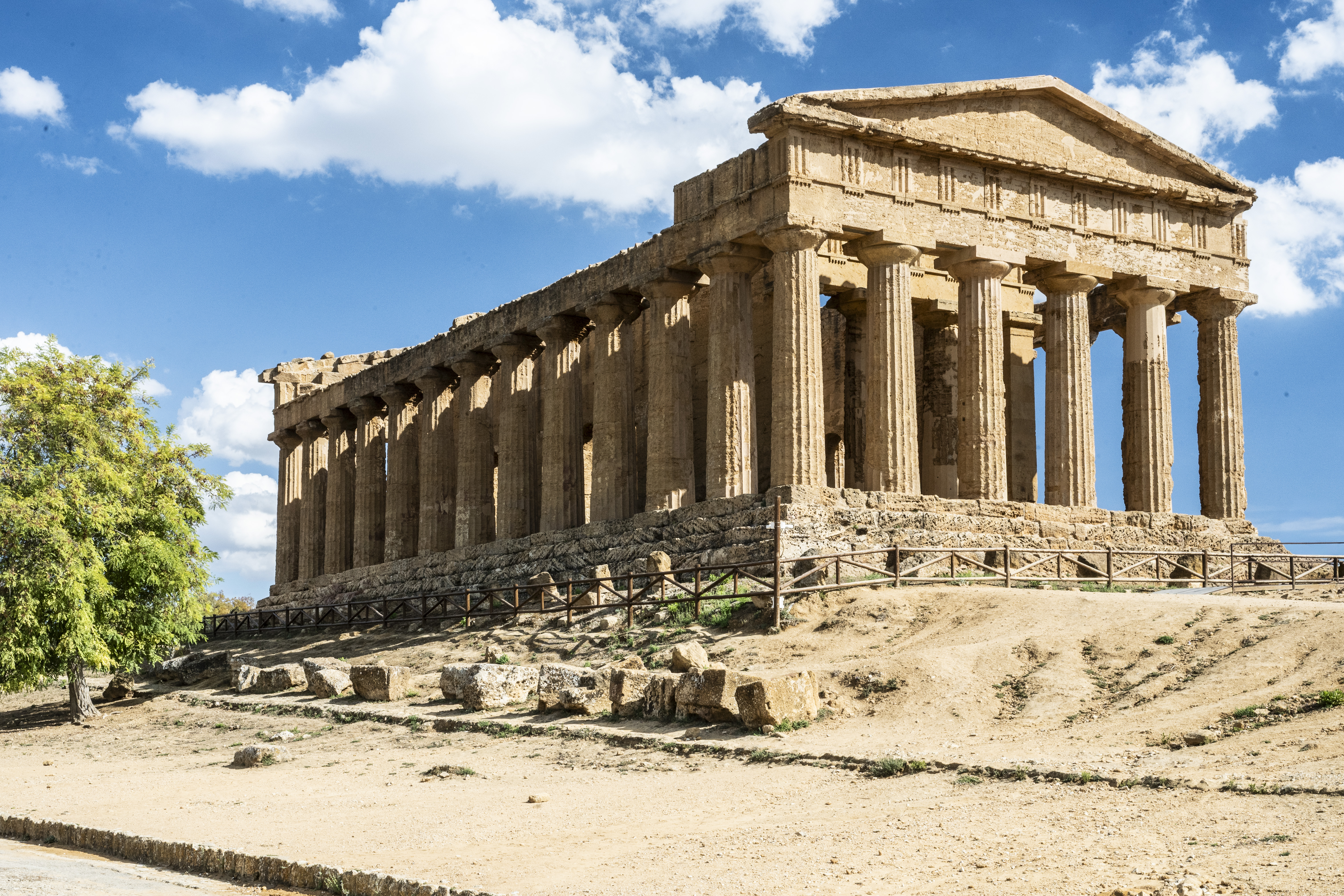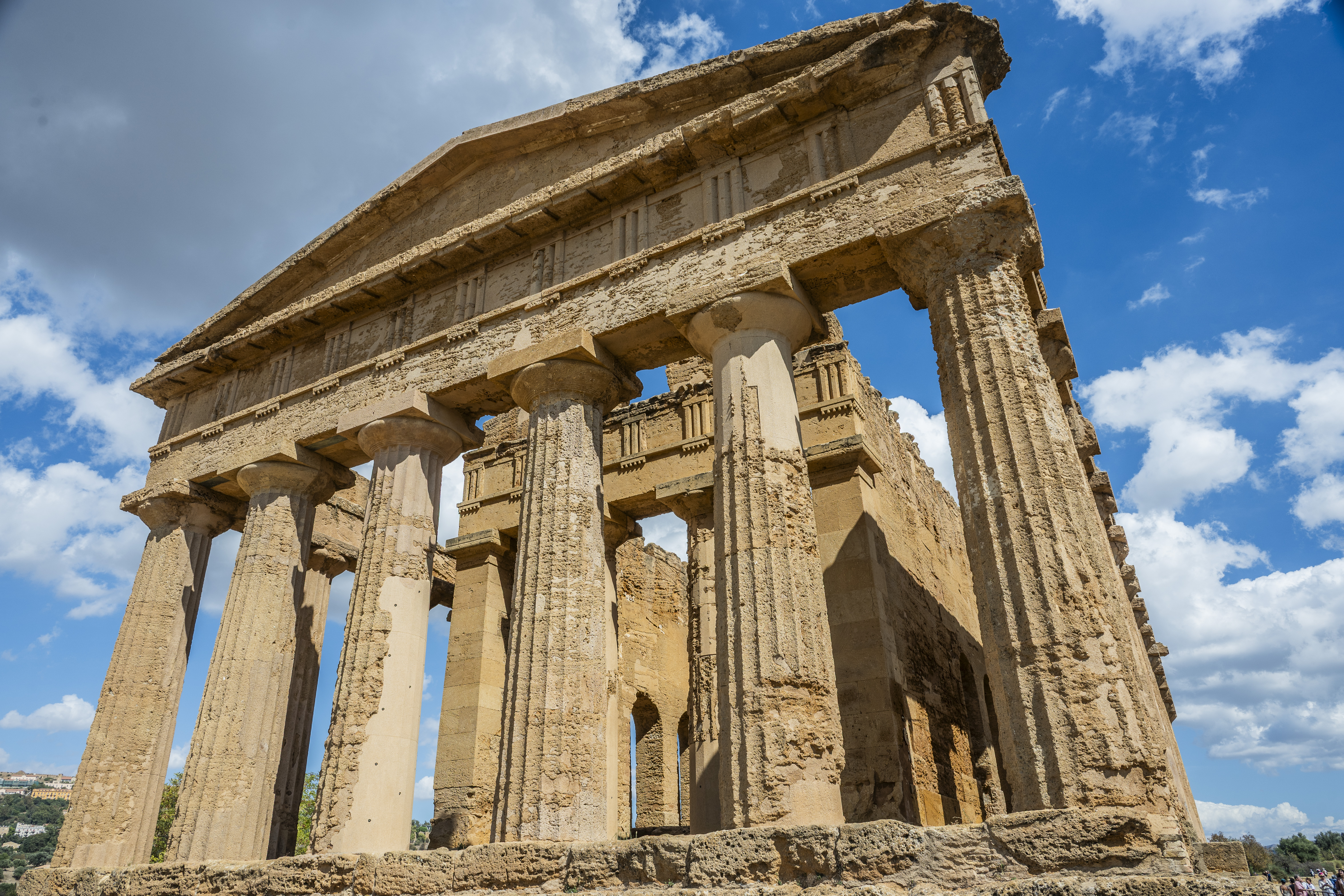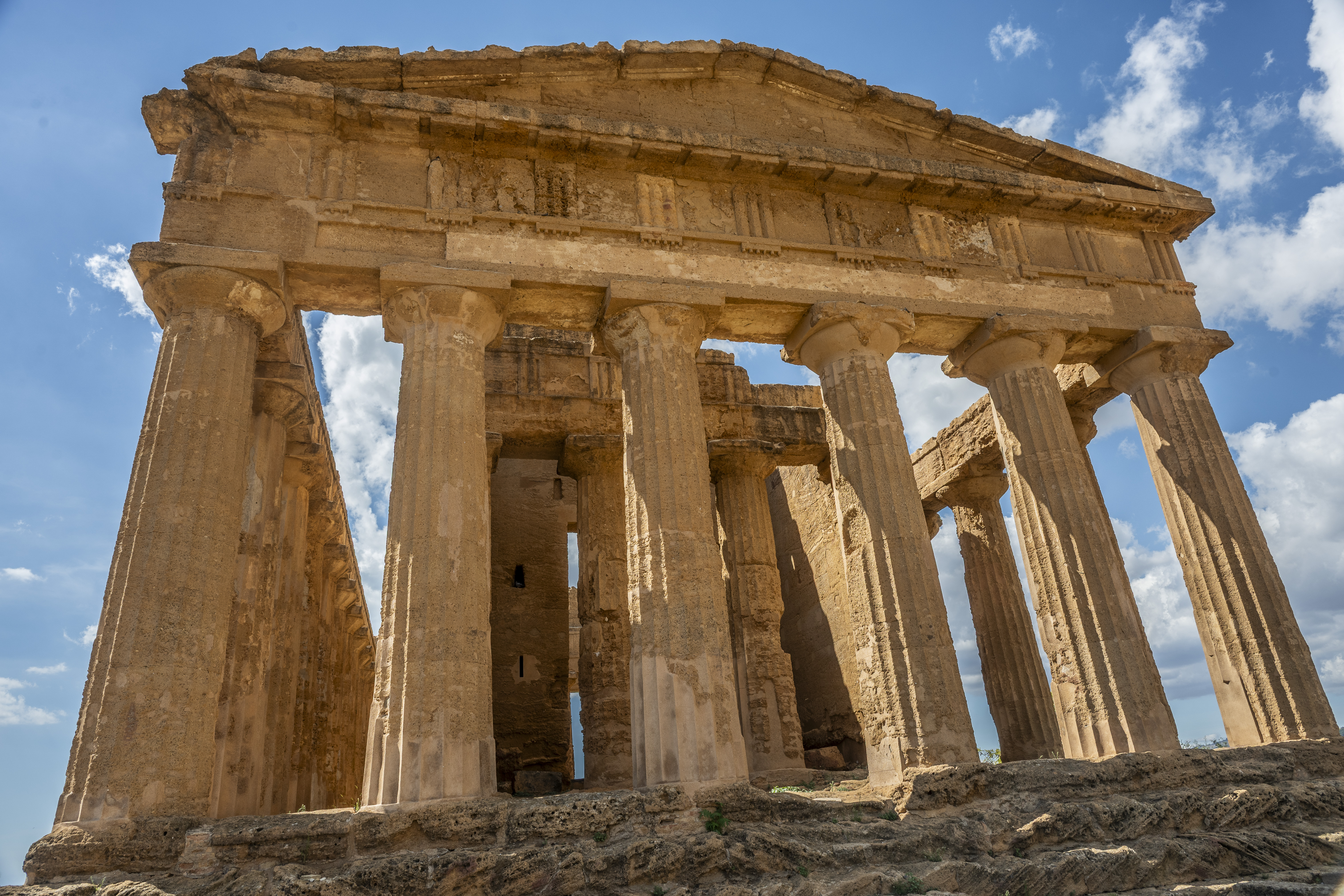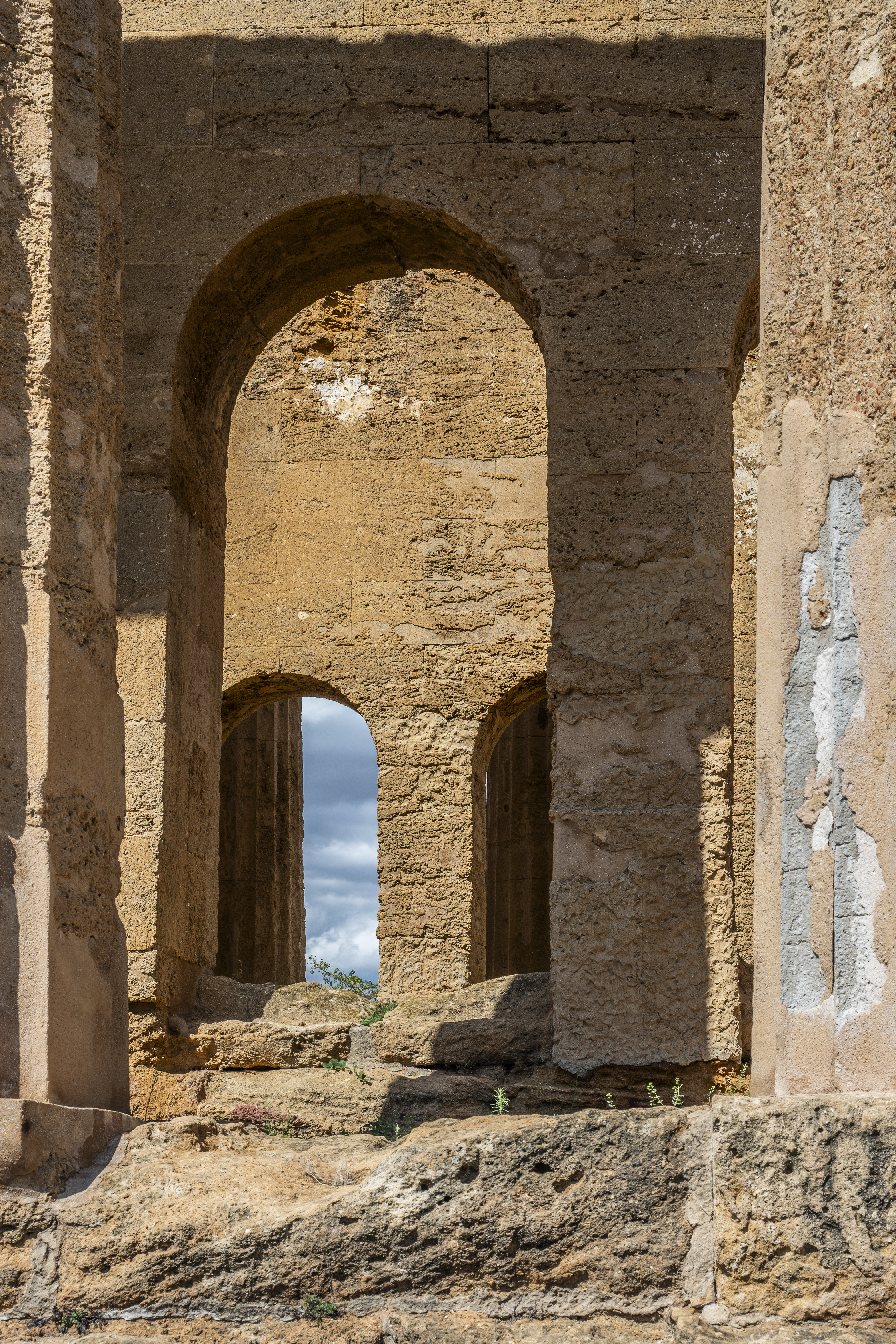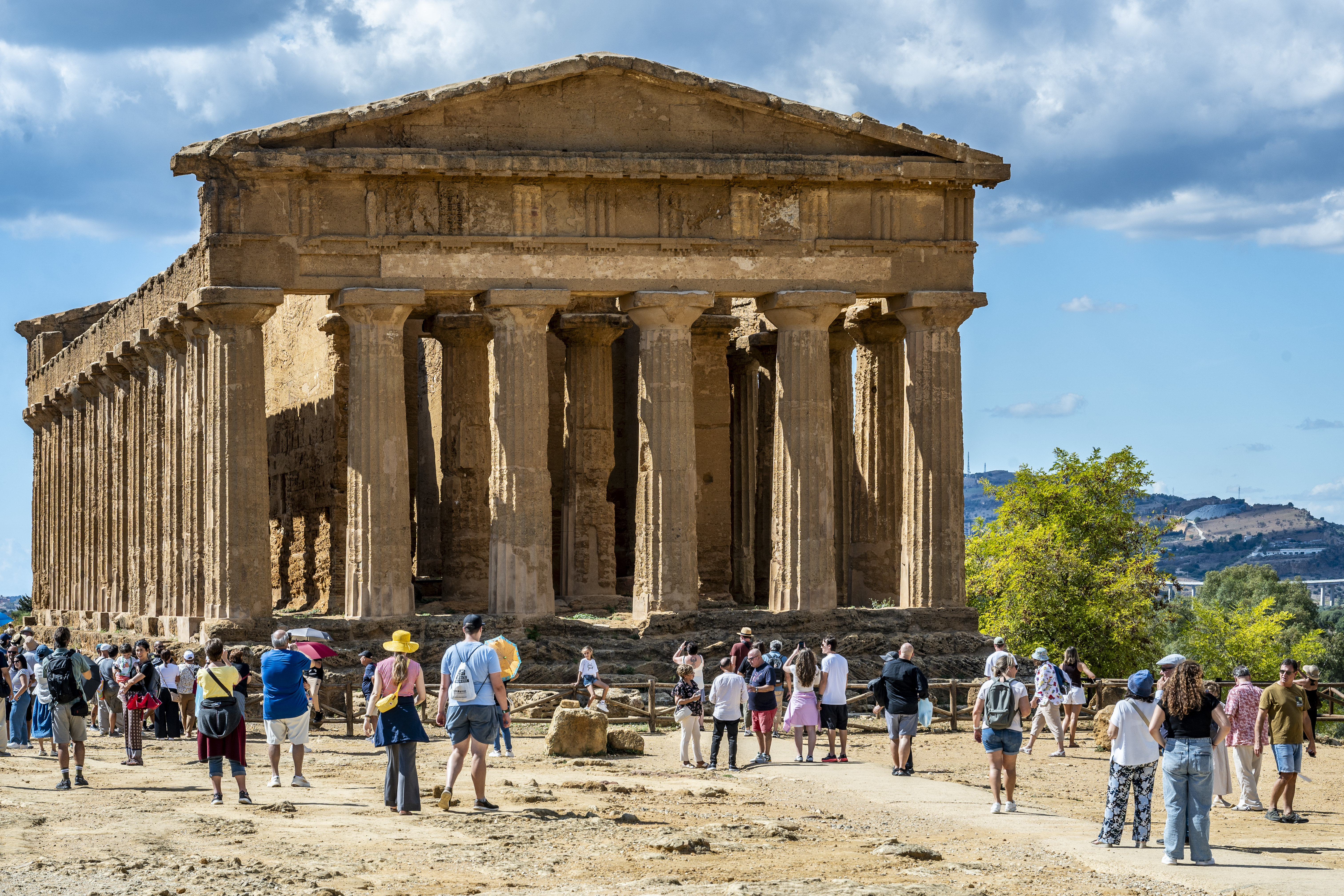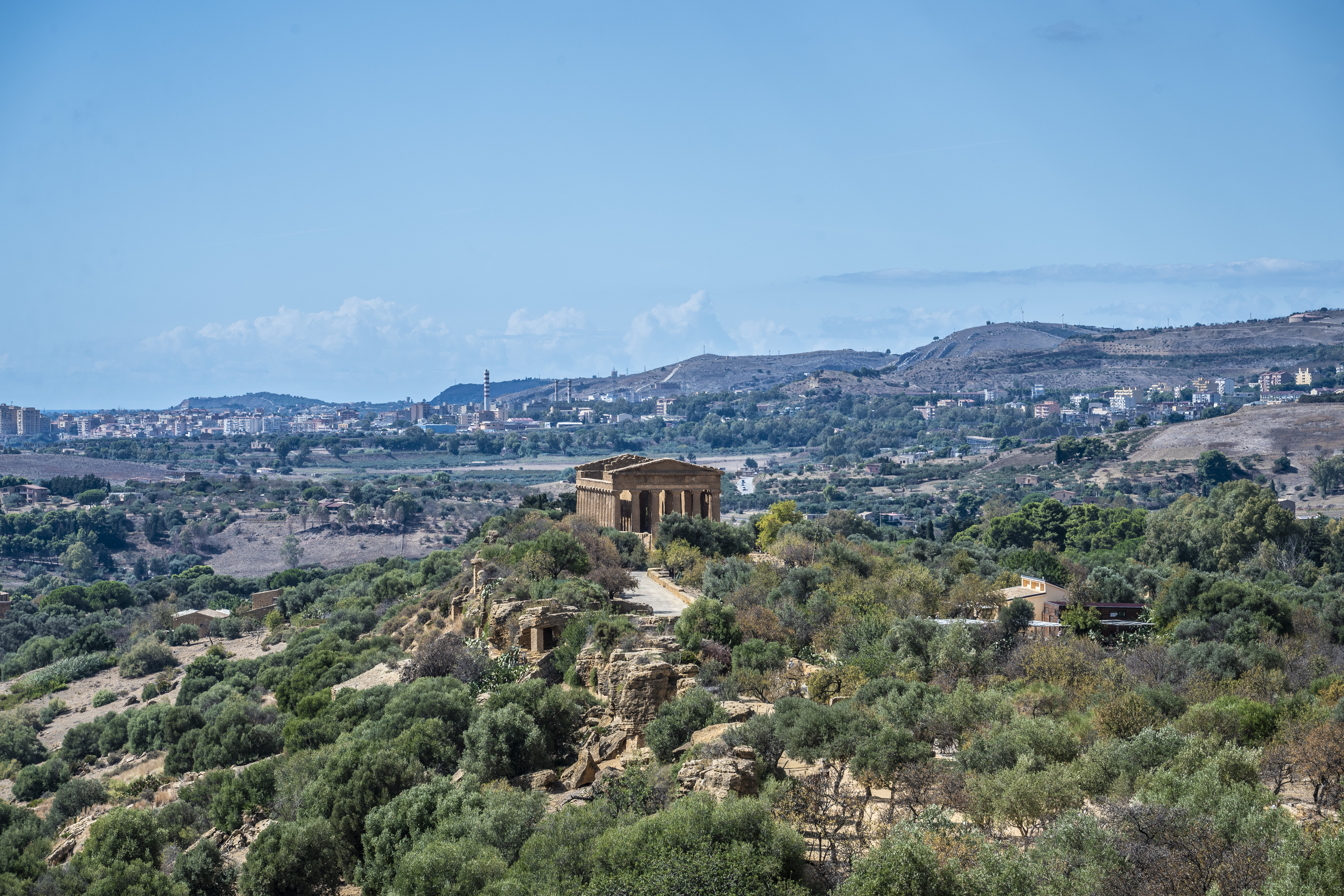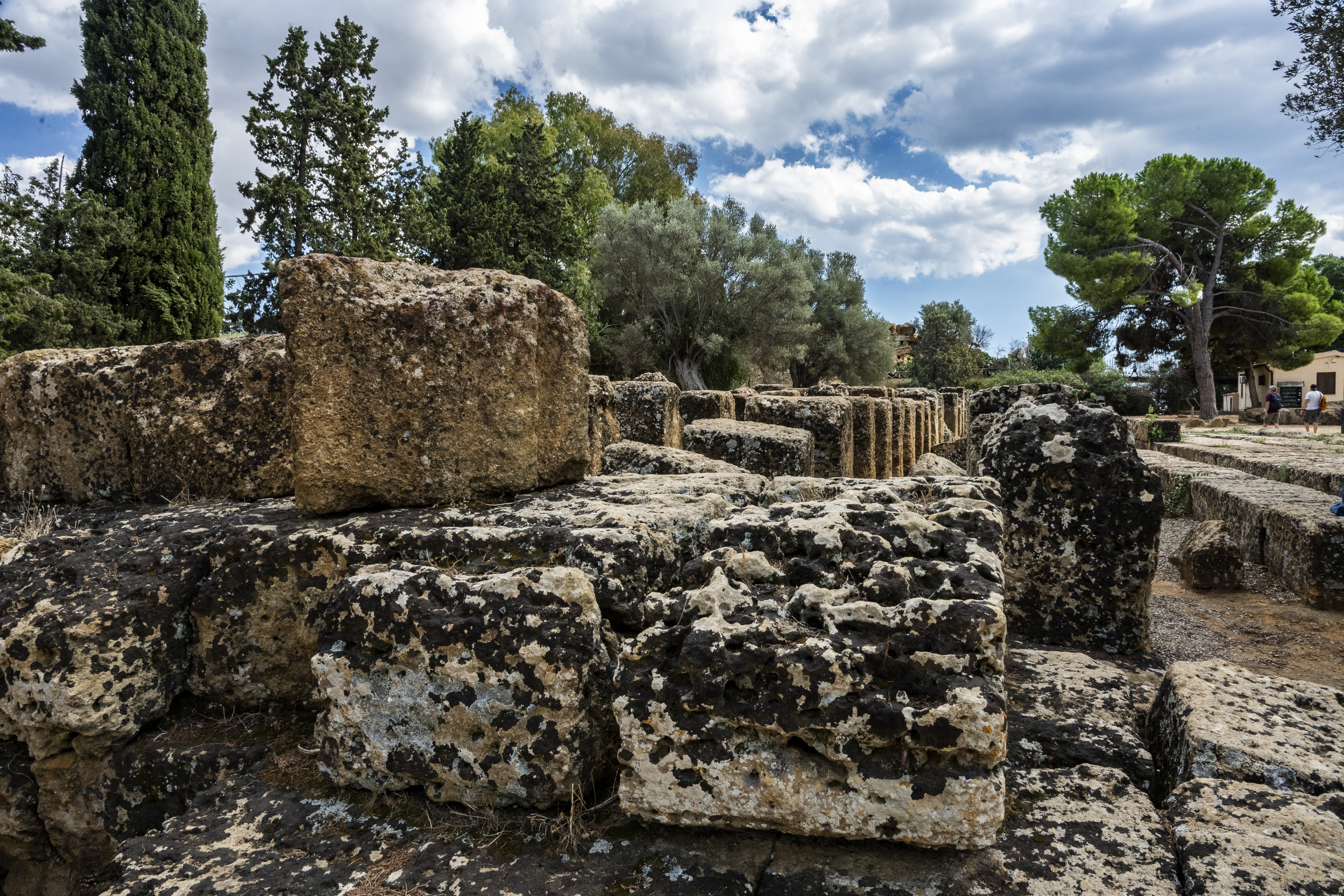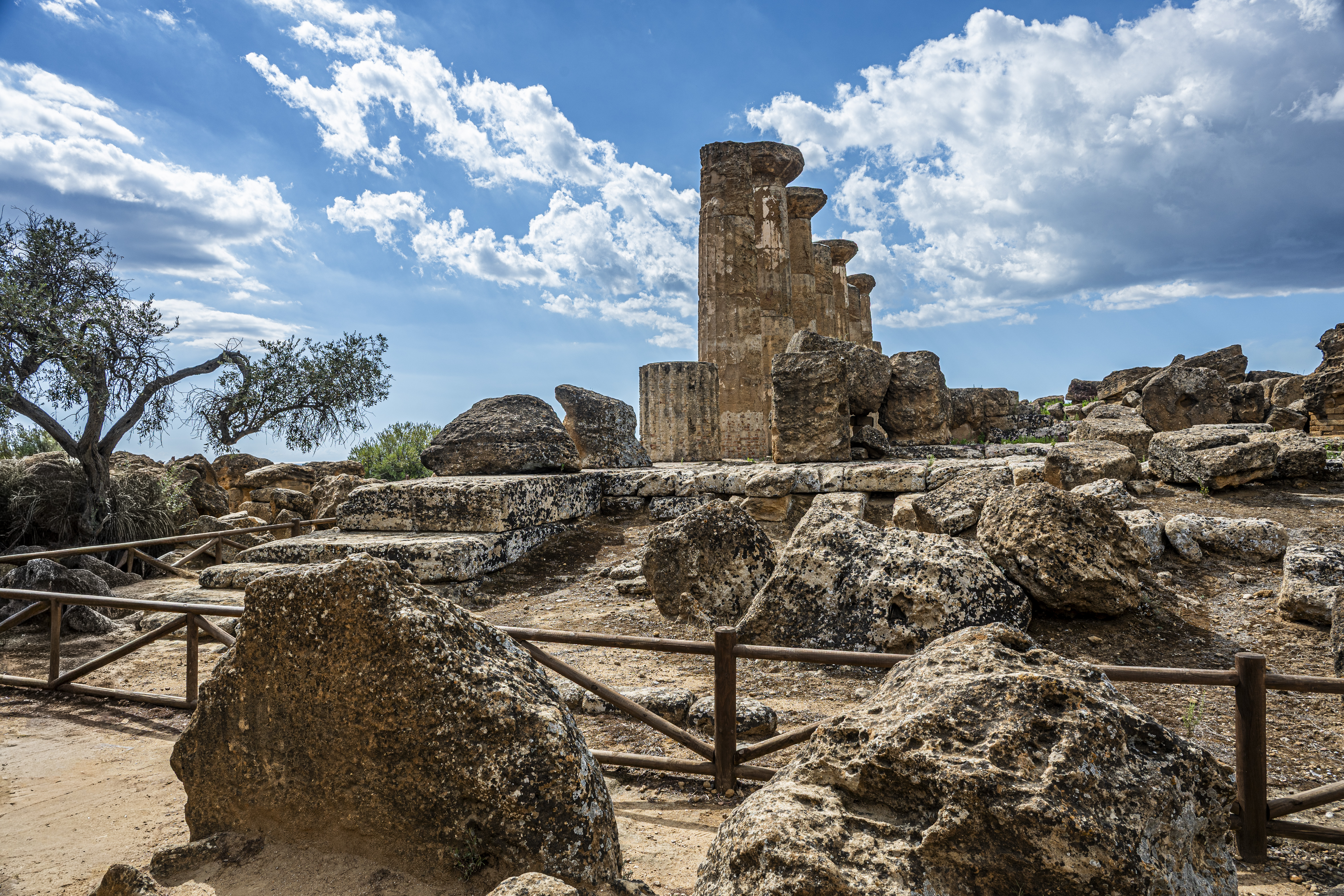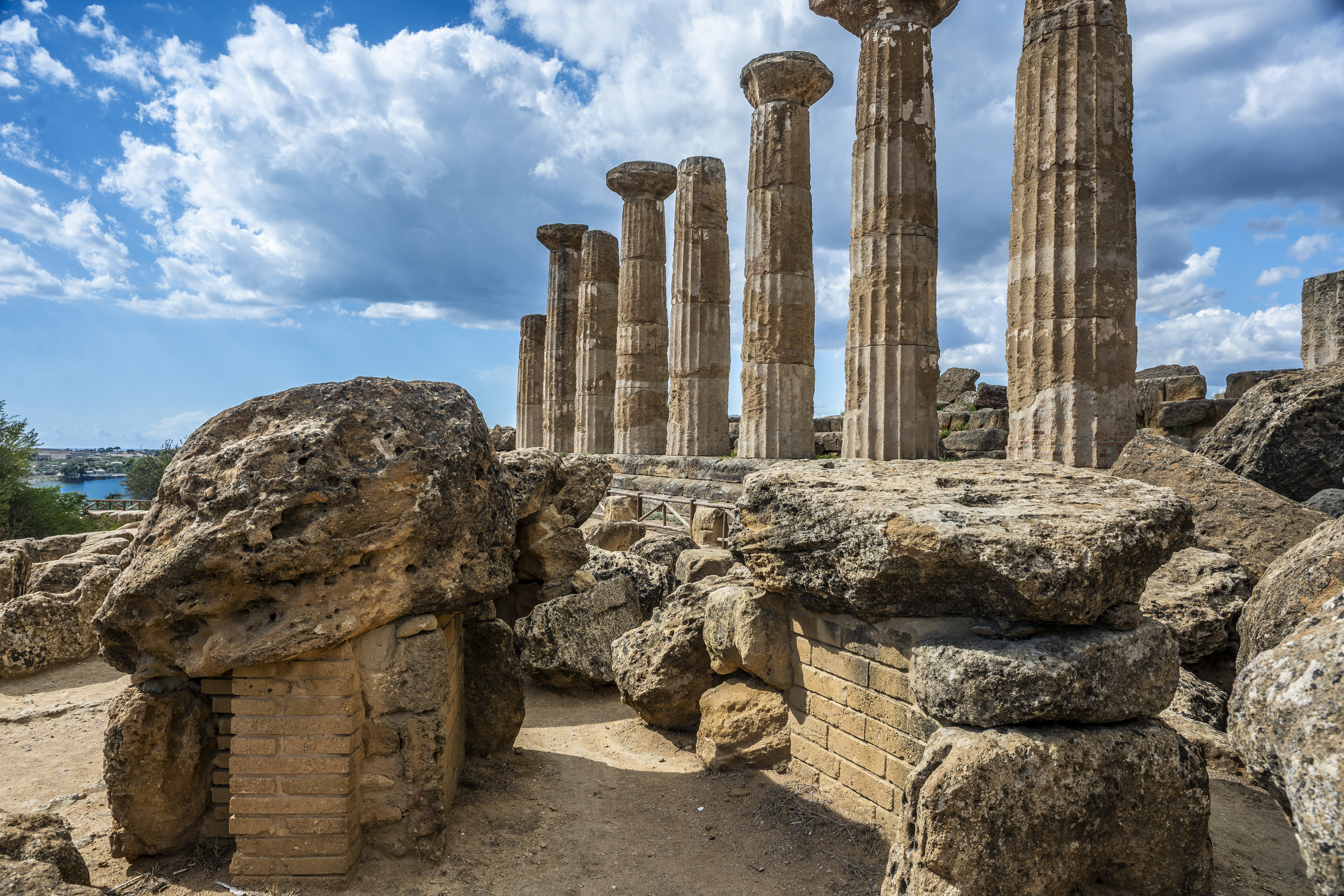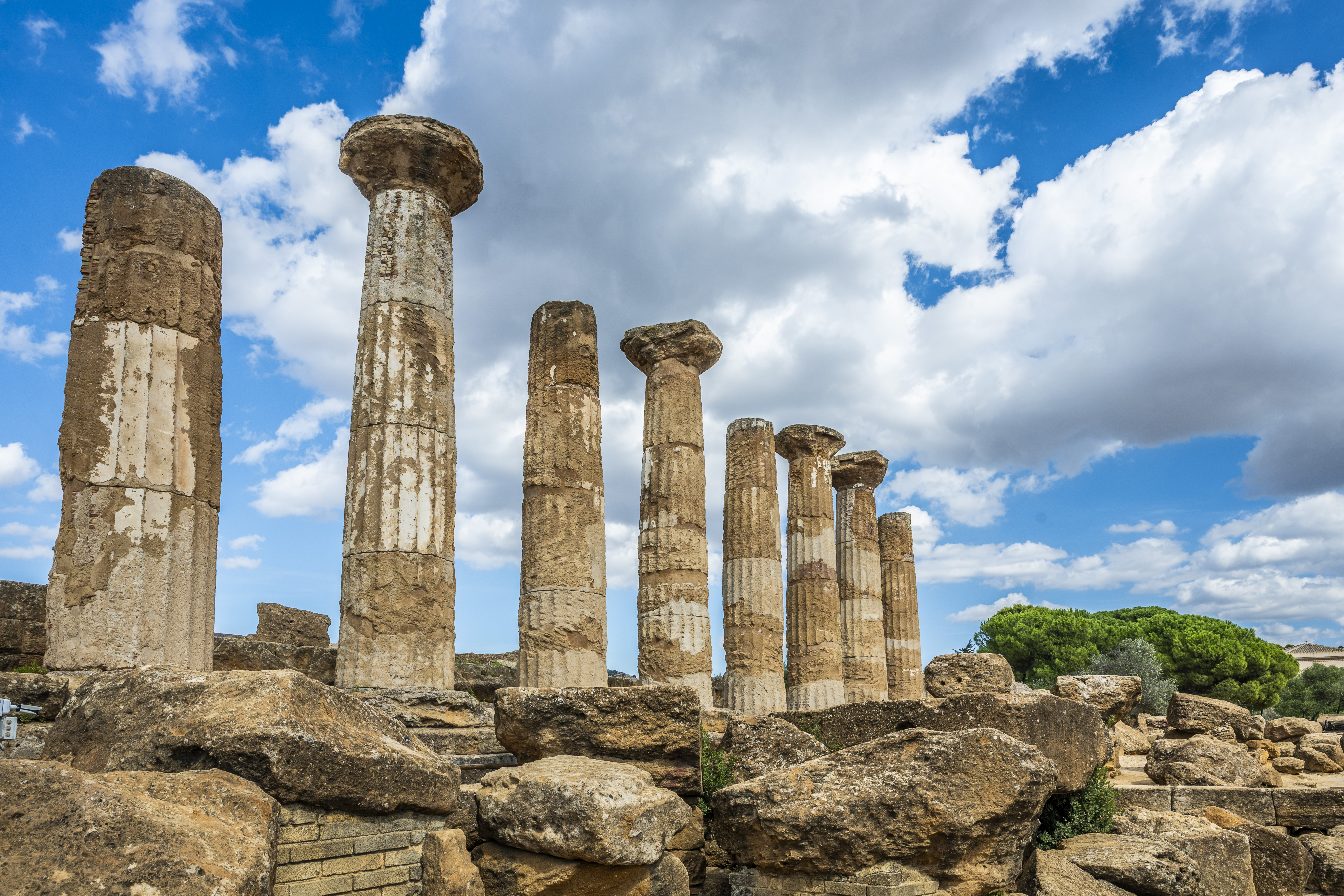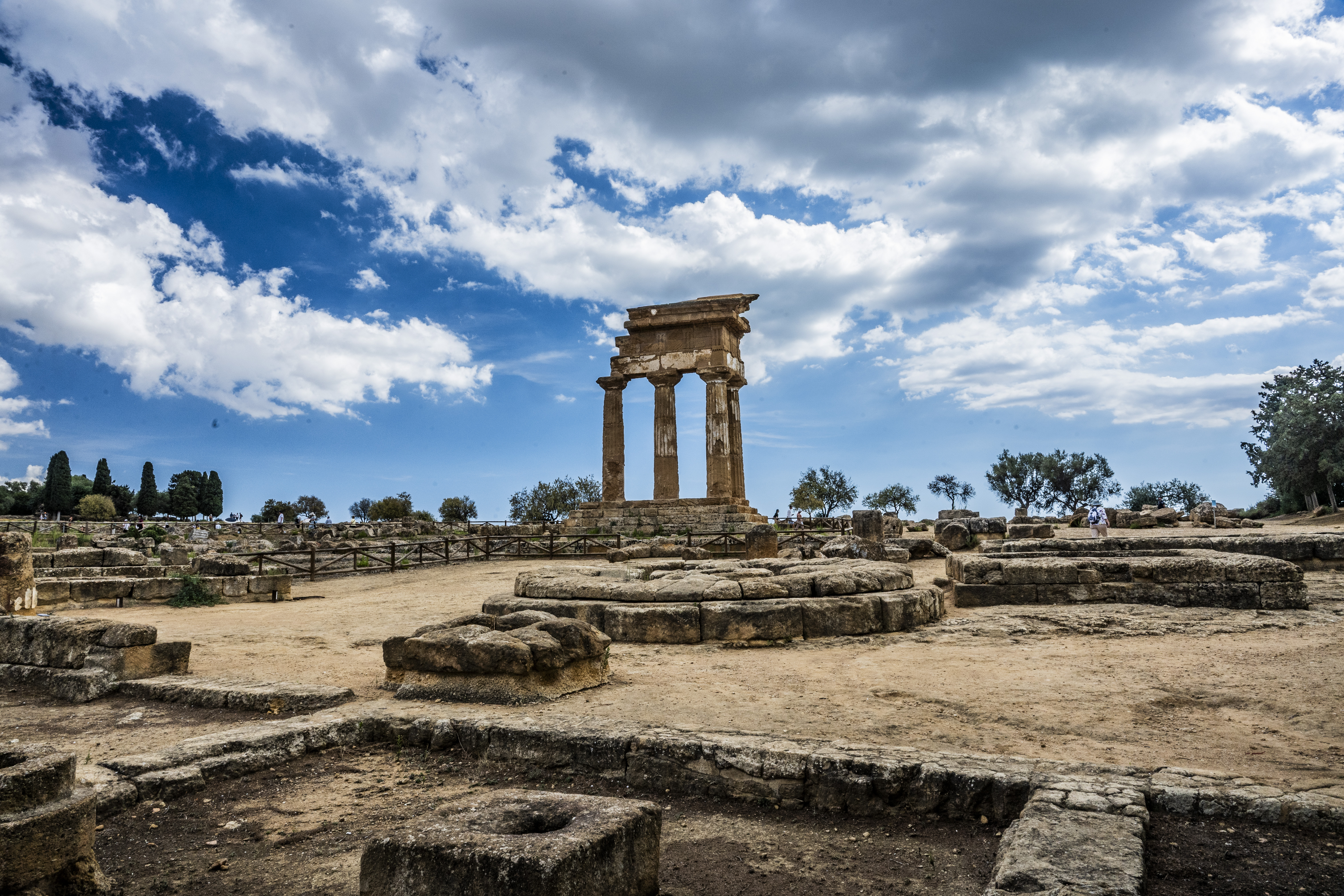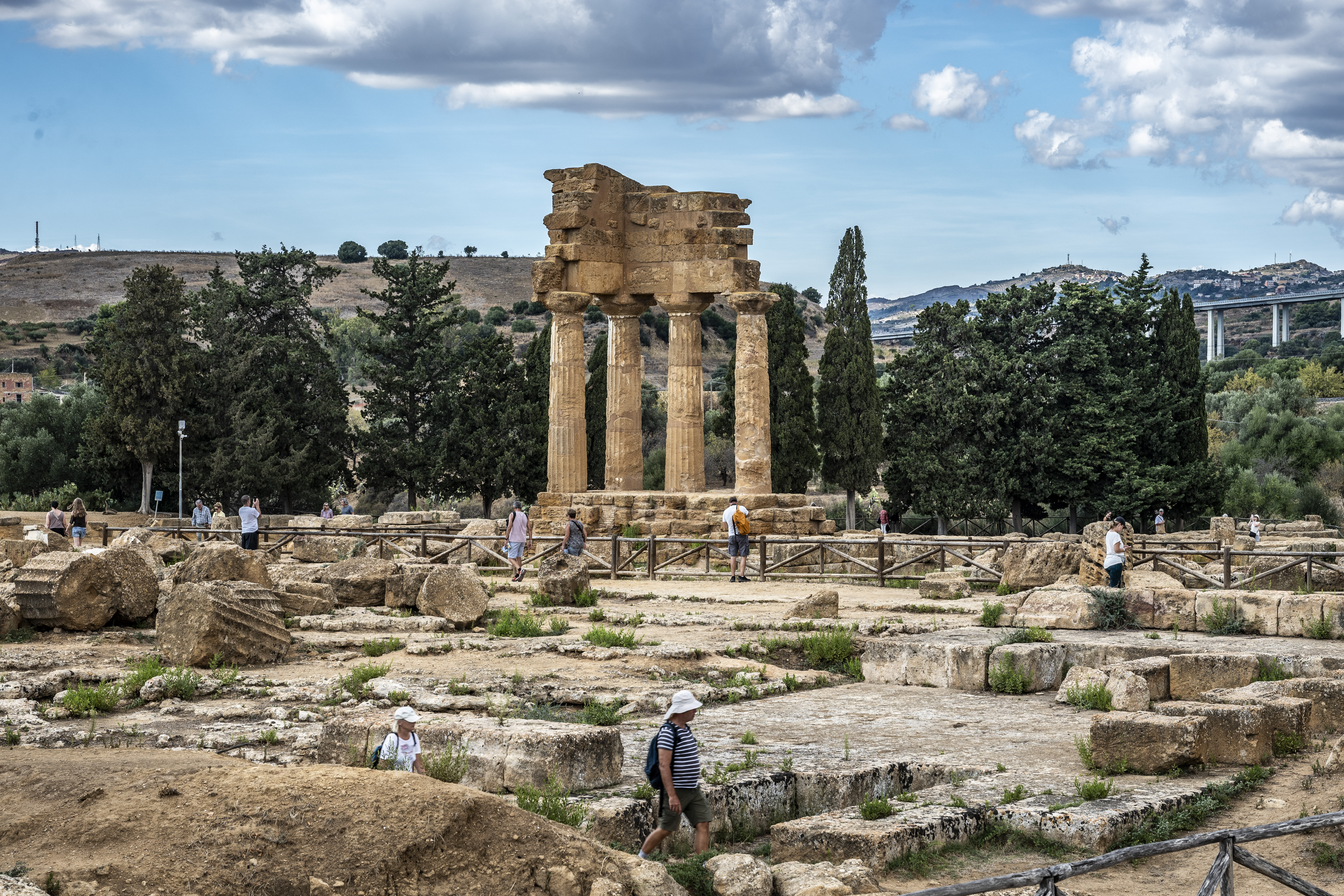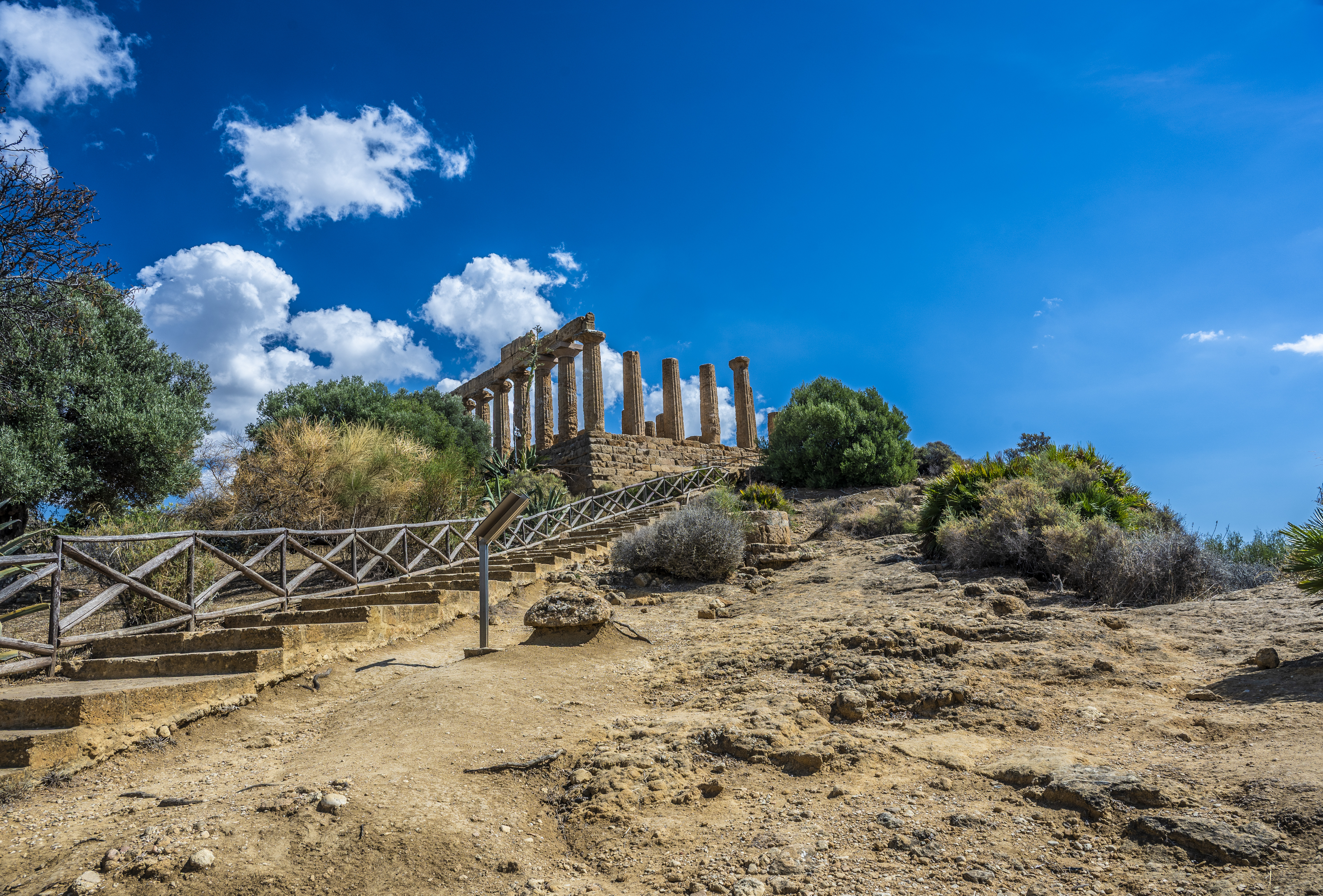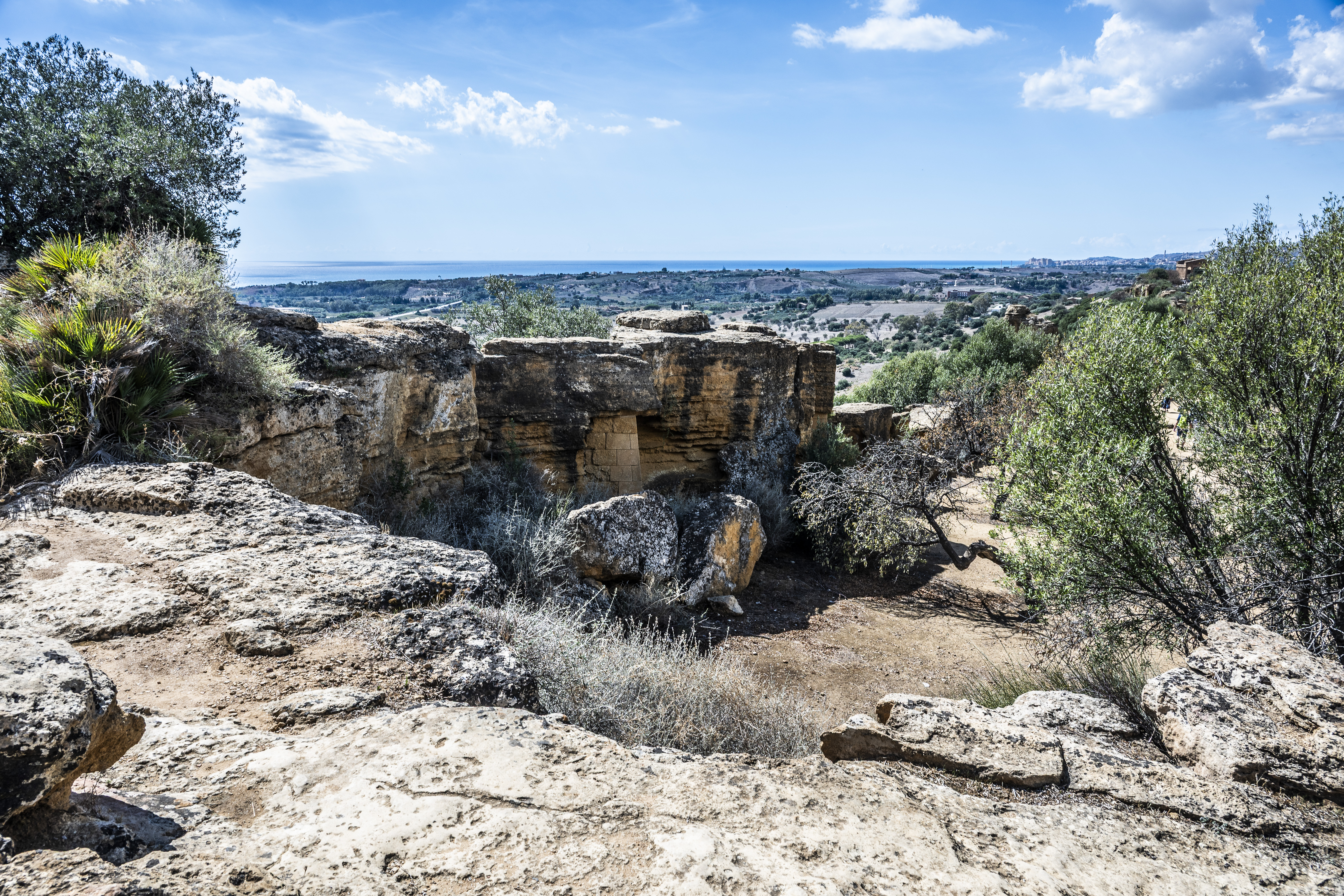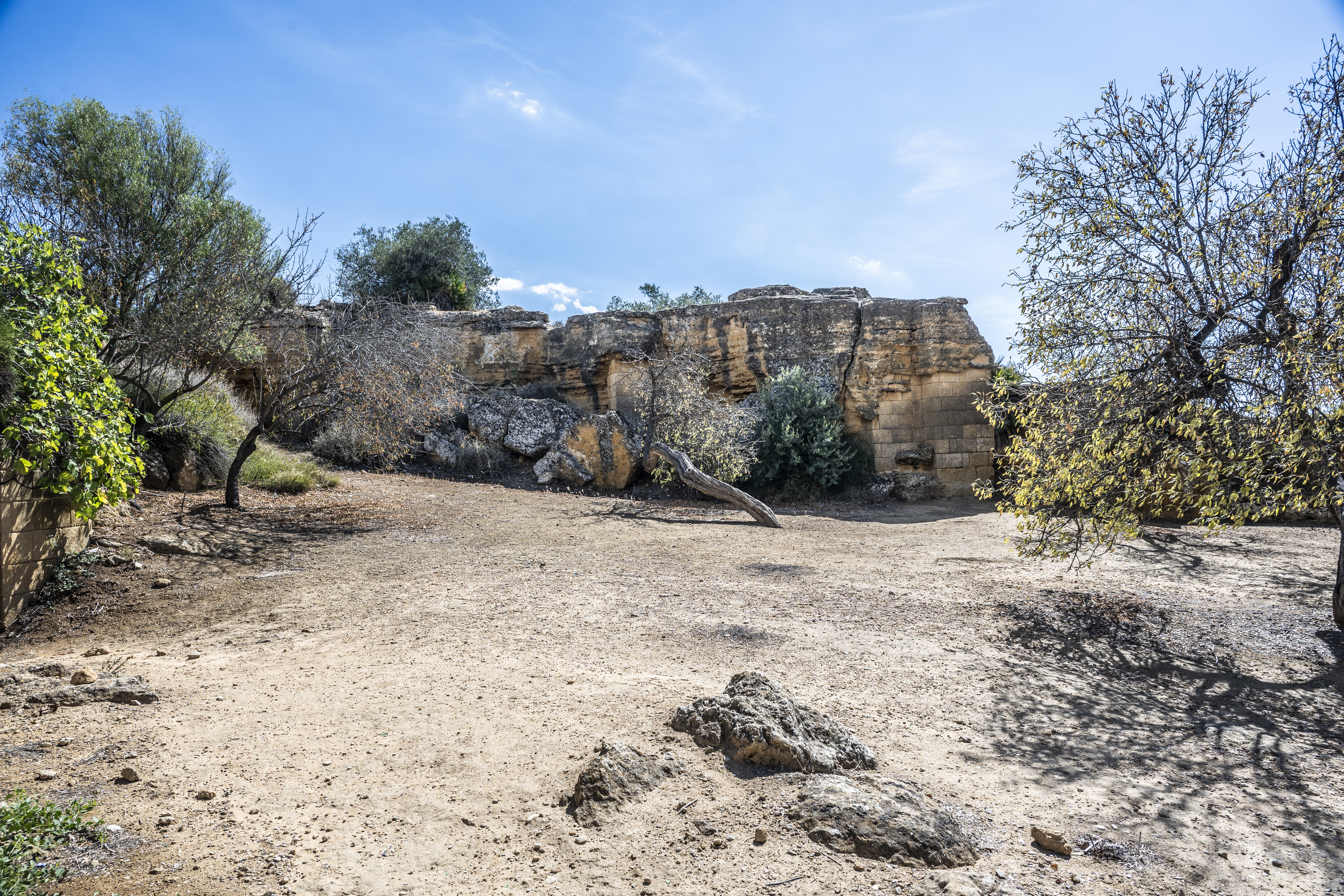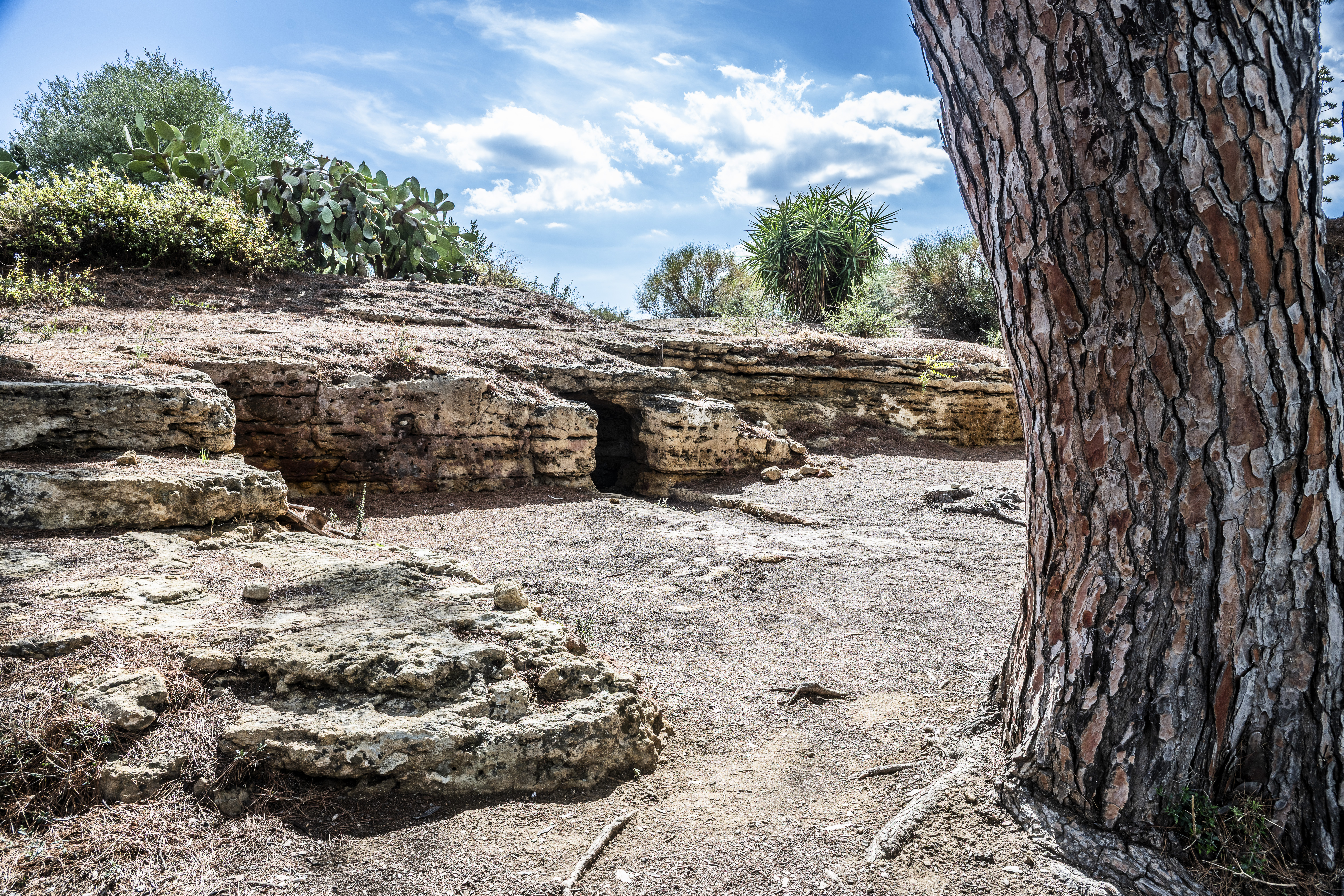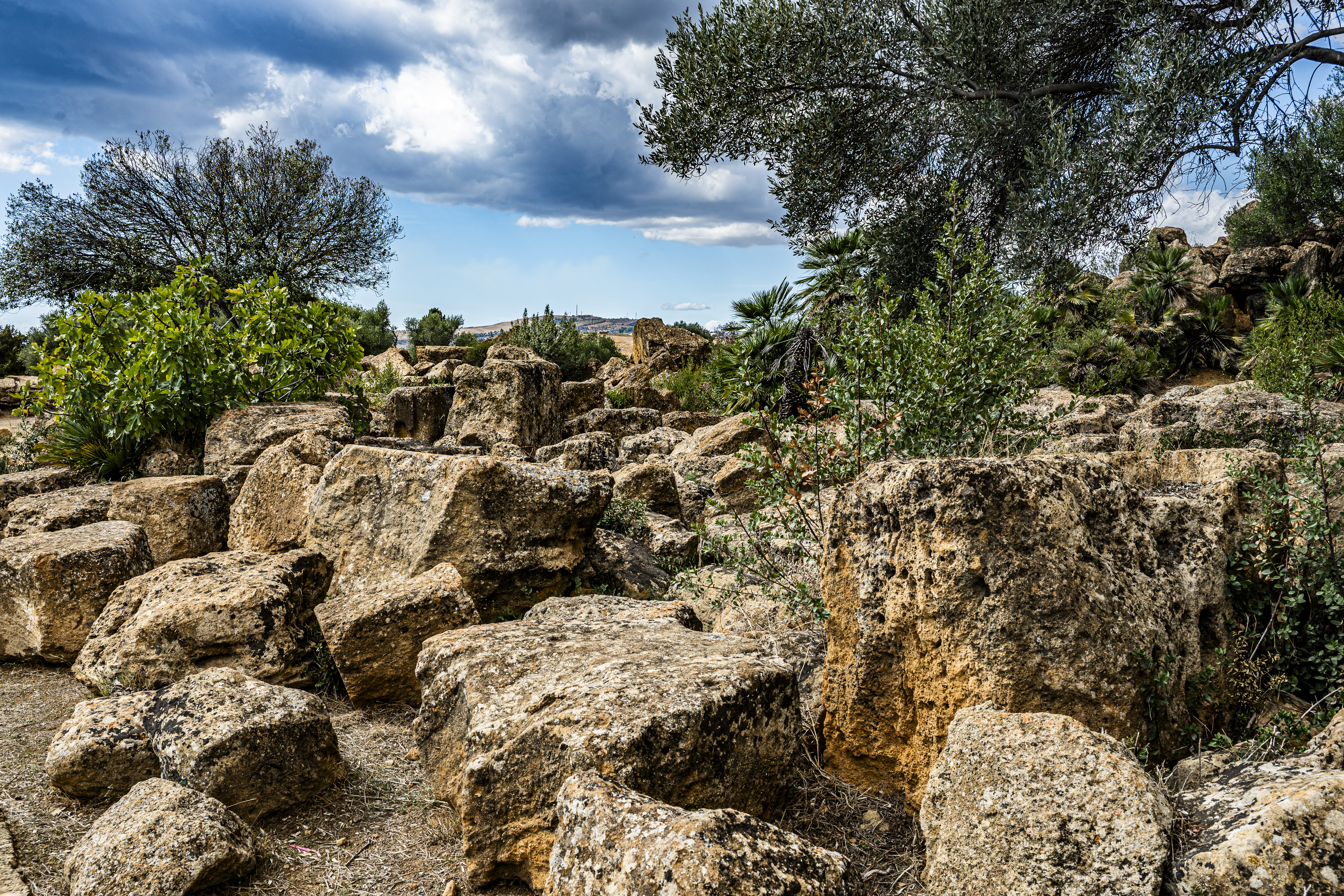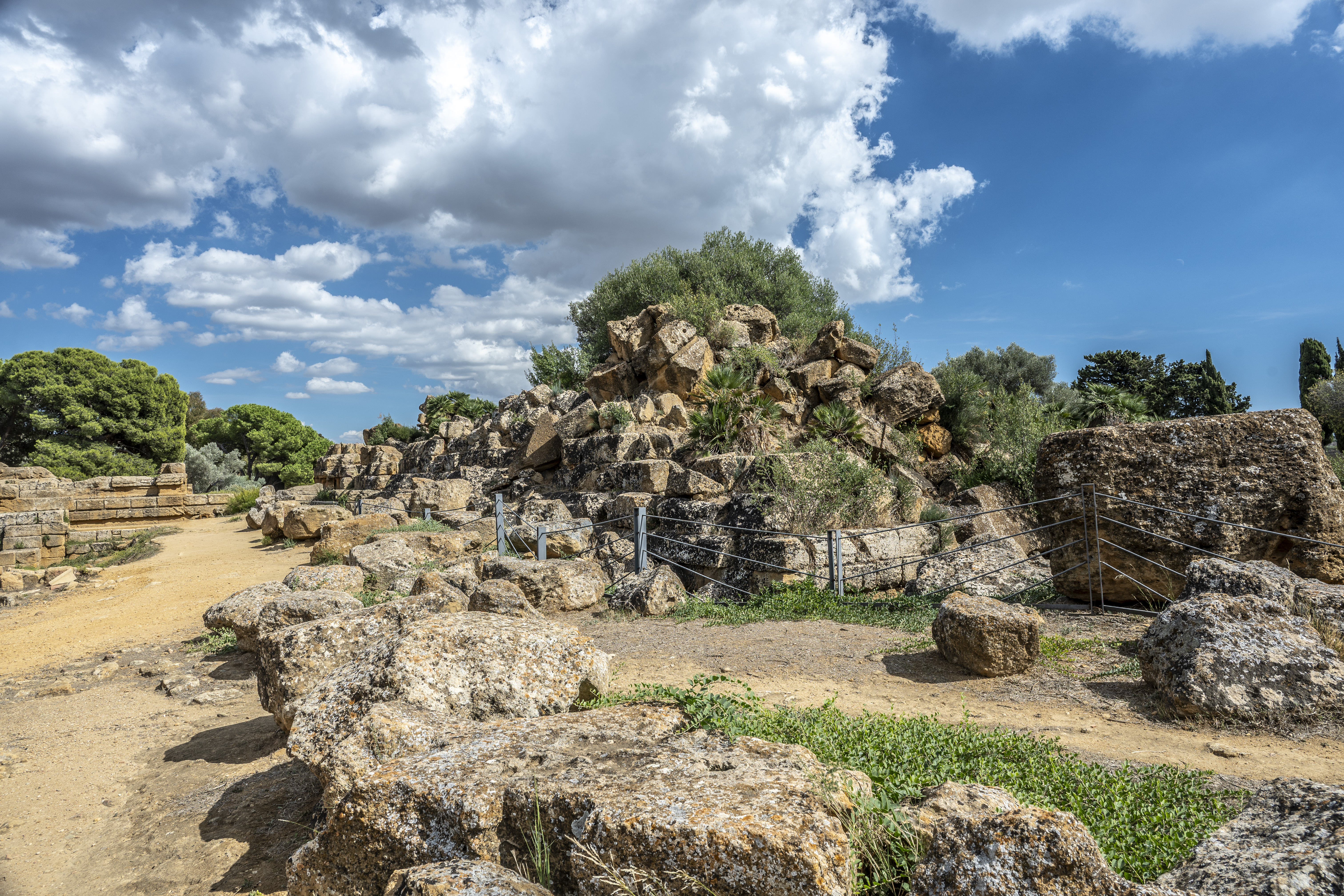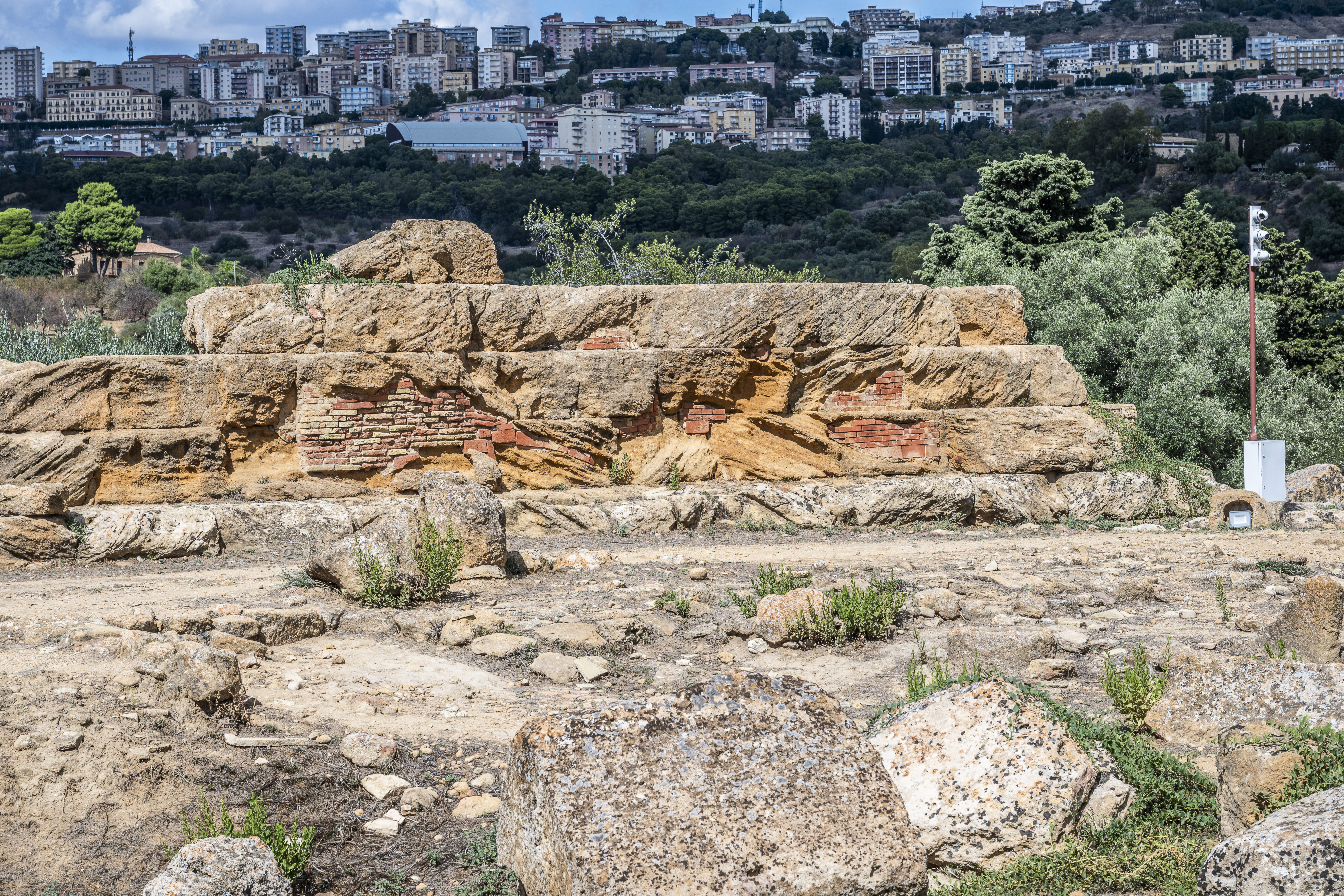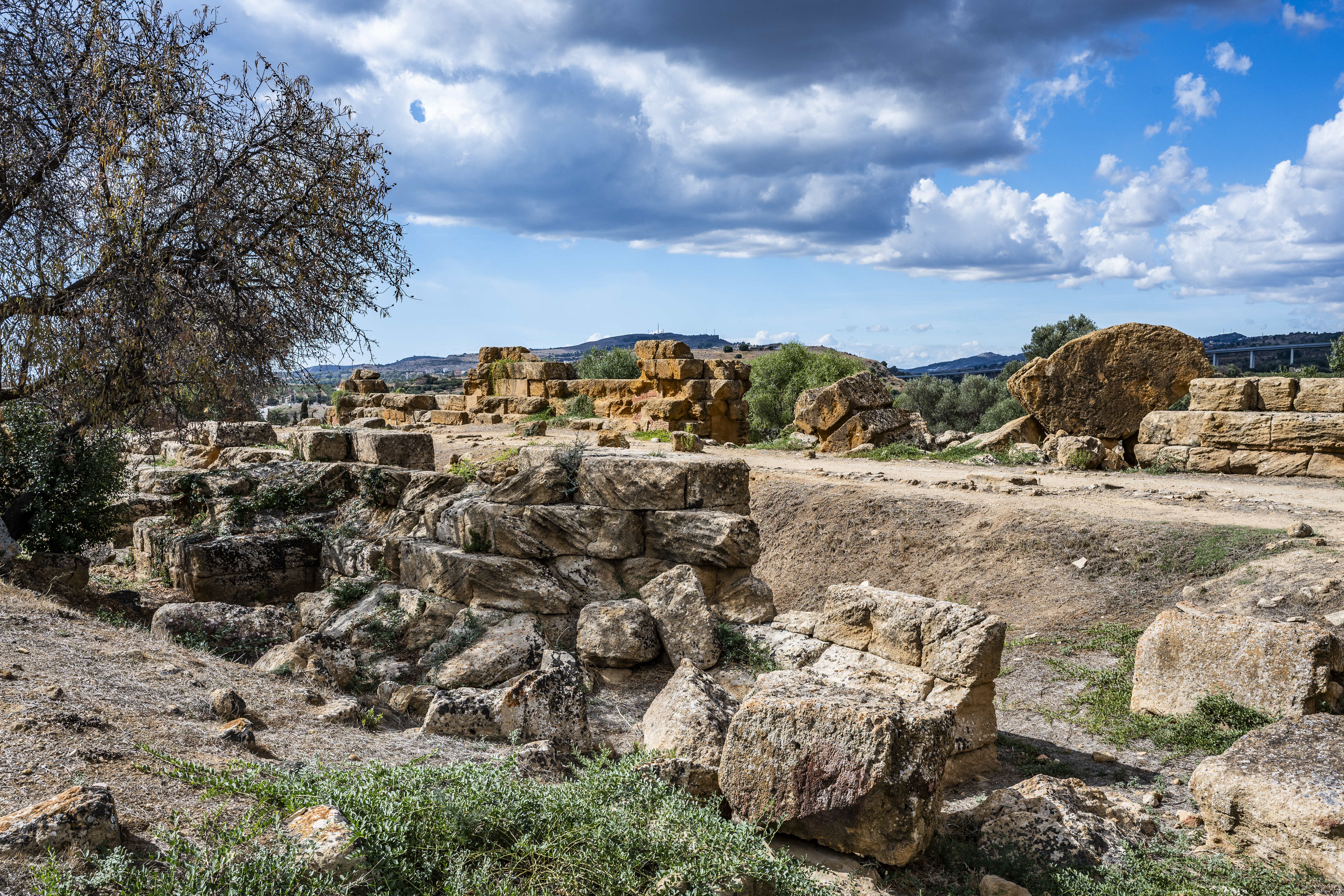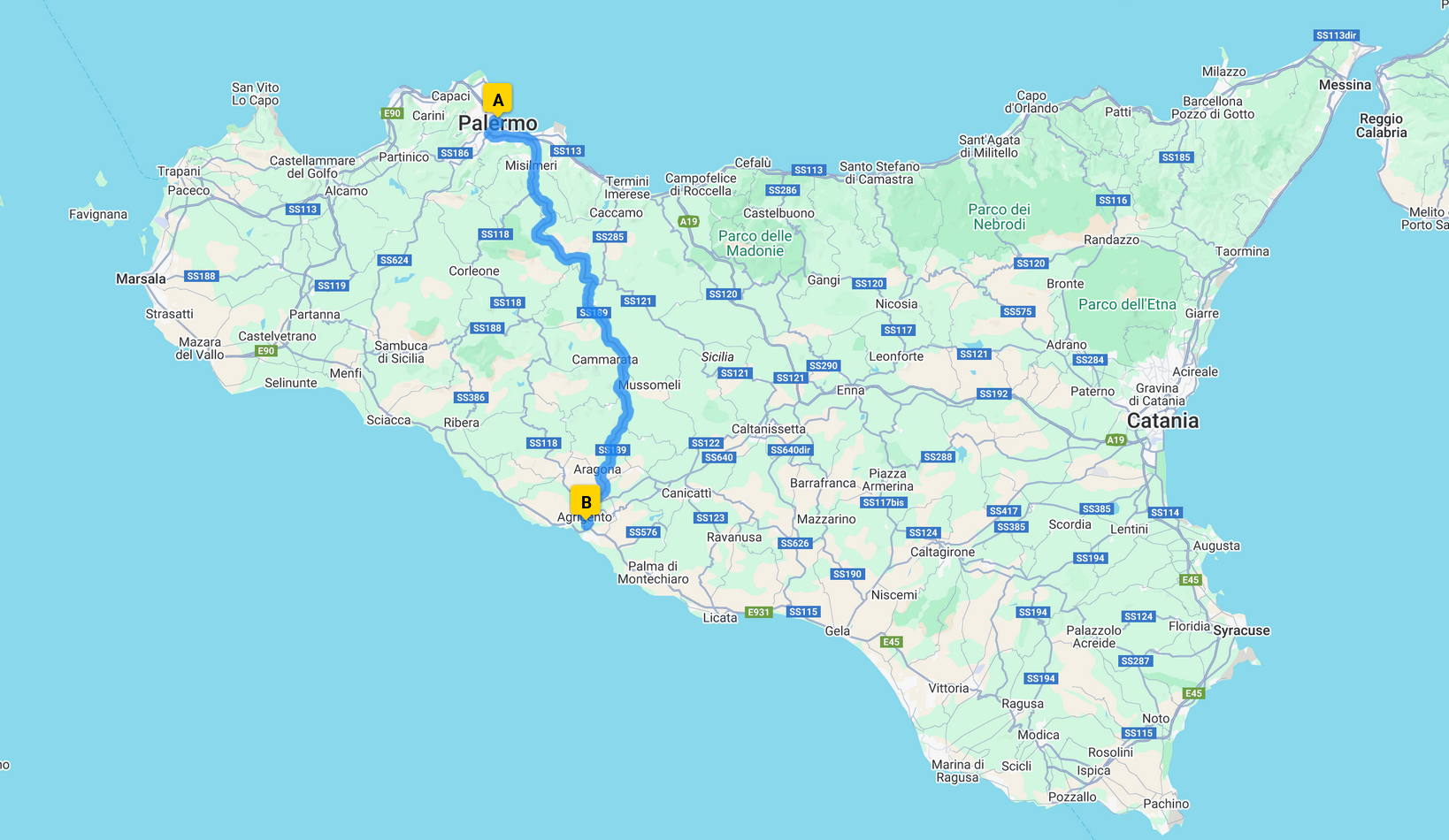The Temple of Juno
The Temple of Juno (also called the Temple of Hera Lacinia) in Agrigento is a 5th-century BCE Doric temple in the Valley of the Temples, famous for its commanding position and its role in the sacred landscape of ancient Akragas.
Name and Attribution
The temple is commonly known as the Temple of Juno (Hera Lacinia), but this is a misattribution. Ancient sources mistakenly linked it to Hera Lacinia at Capo Lacinio (near Crotone in Calabria). The true deity worshipped here remains uncertain, as with many temples in Agrigento.
Architecture
Date: Built around 450 BCE, in the Doric style.
Plan: A peripteral hexastyle temple (6 columns on the short sides, 13 on the long sides).
Dimensions: About 38 × 16.9 meters.
Columns: 34 in total, each about 6.4 meters high, resting on a four-step crepidoma.
Interior:
- Pronaos (front porch)
- Naos (cella, housing the cult statue)
- Opisthodomos (rear chamber)
Two staircases inside the walls led to the roof, possibly for ritual or maintenance purposes.
In front of the eastern façade stood a monumental altar with ten steps, used for sacrifices.
History
406 BCE: Damaged by fire during the Carthaginian sack of Akragas. Burn marks are still visible on the stone.
Roman period: Restored with modifications, including a marble roof replacing the original terracotta.
18th century: Partial reconstruction (anastylosis) raised several columns on the north side.
Symbolism and Ritual
Traditionally associated with marriage rites: couples are said to have purified themselves in the nearby river and offered sacrifices here. Its elevated position on a rocky spur gave it a commanding view of the valley, reinforcing its role as a landmark of divine protection.
In Summary
In short: The Temple of Juno in Agrigento is a Doric masterpiece of the classical age, scarred by war yet enduring through centuries of reinterpretation, standing today as both ruin and symbol of resilience. Would you like me to compare it directly with the Temple of Concordia—its “twin”—to highlight their architectural and symbolic contrasts
References
Text generated by Microsoft CoPilot
